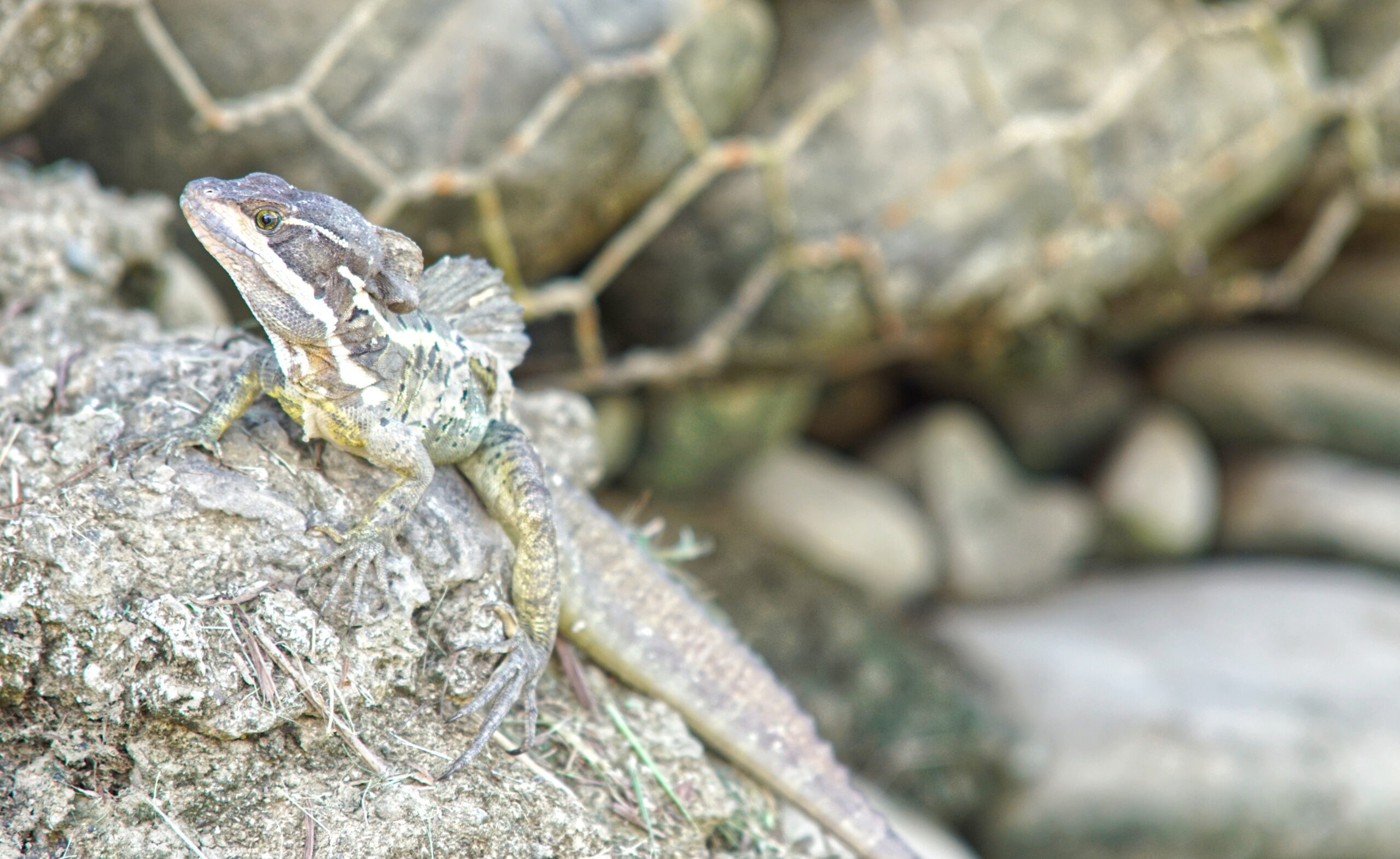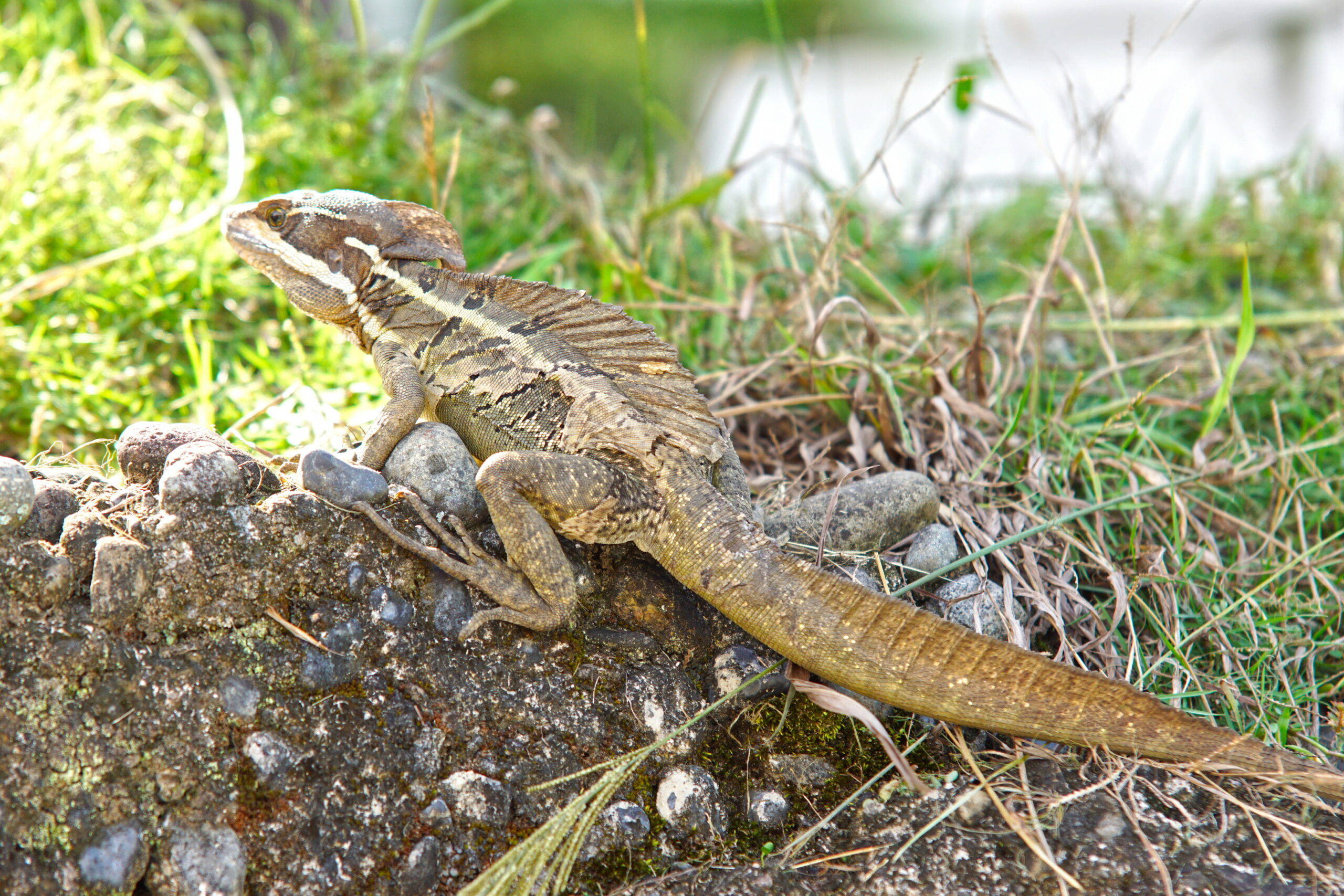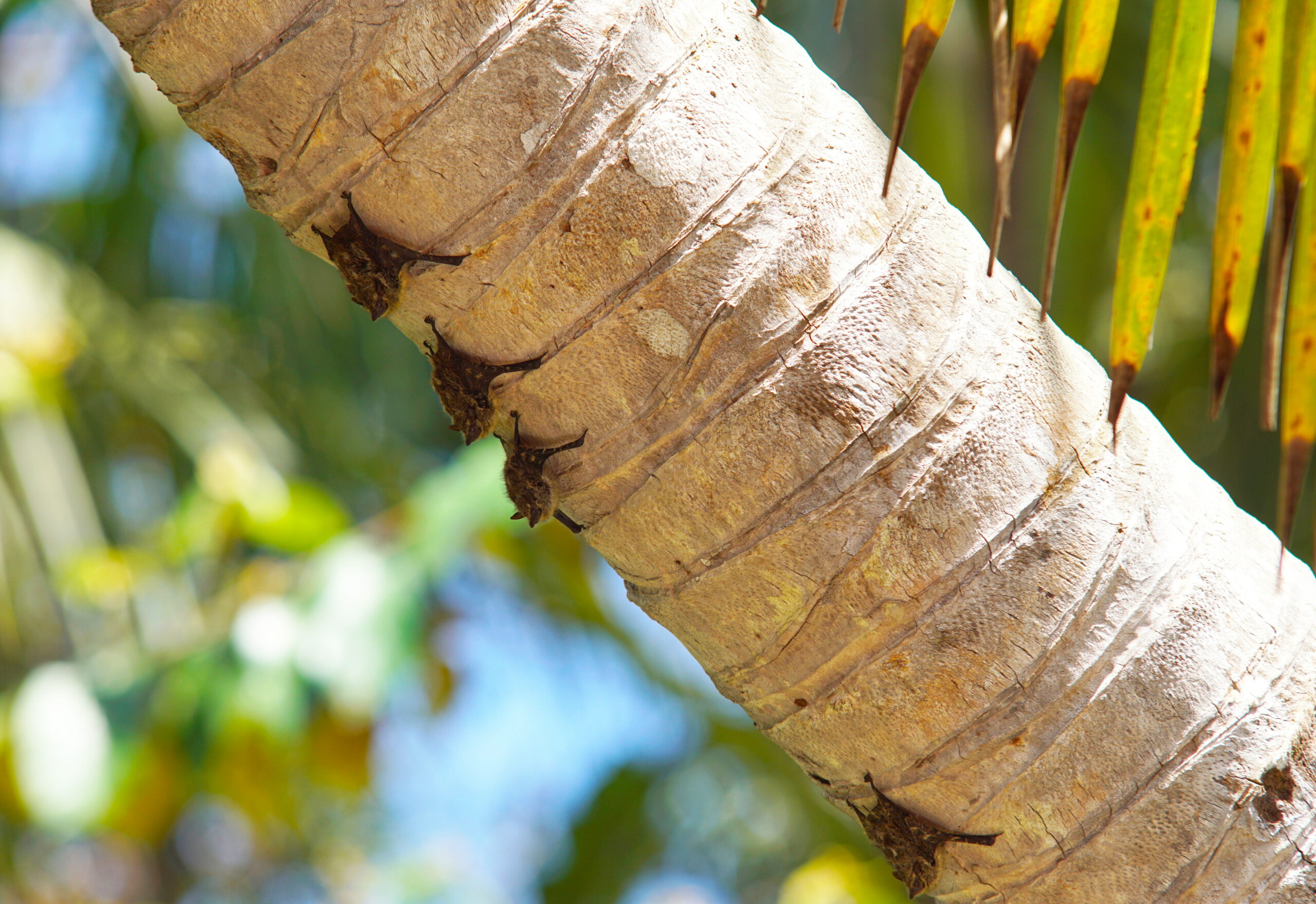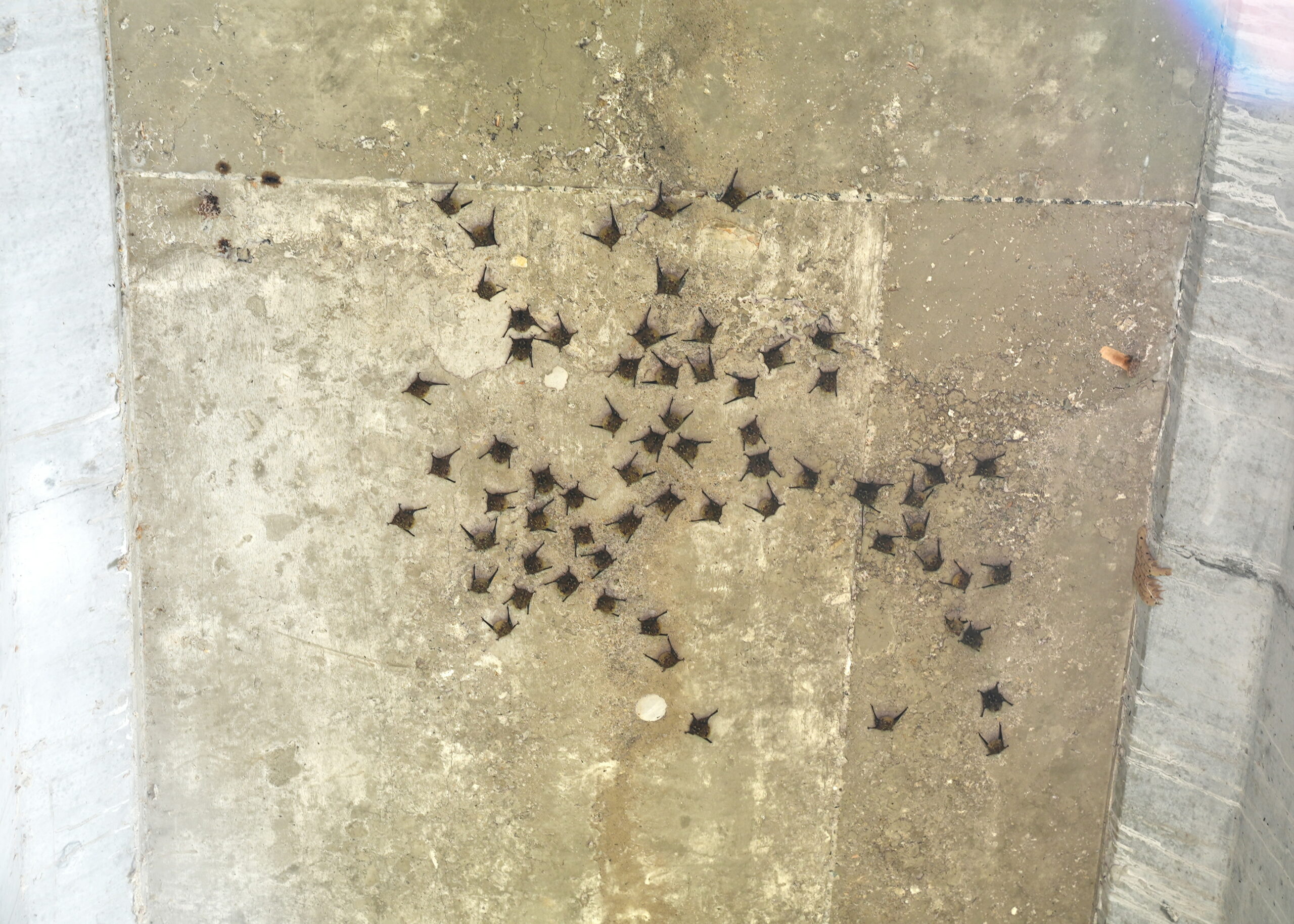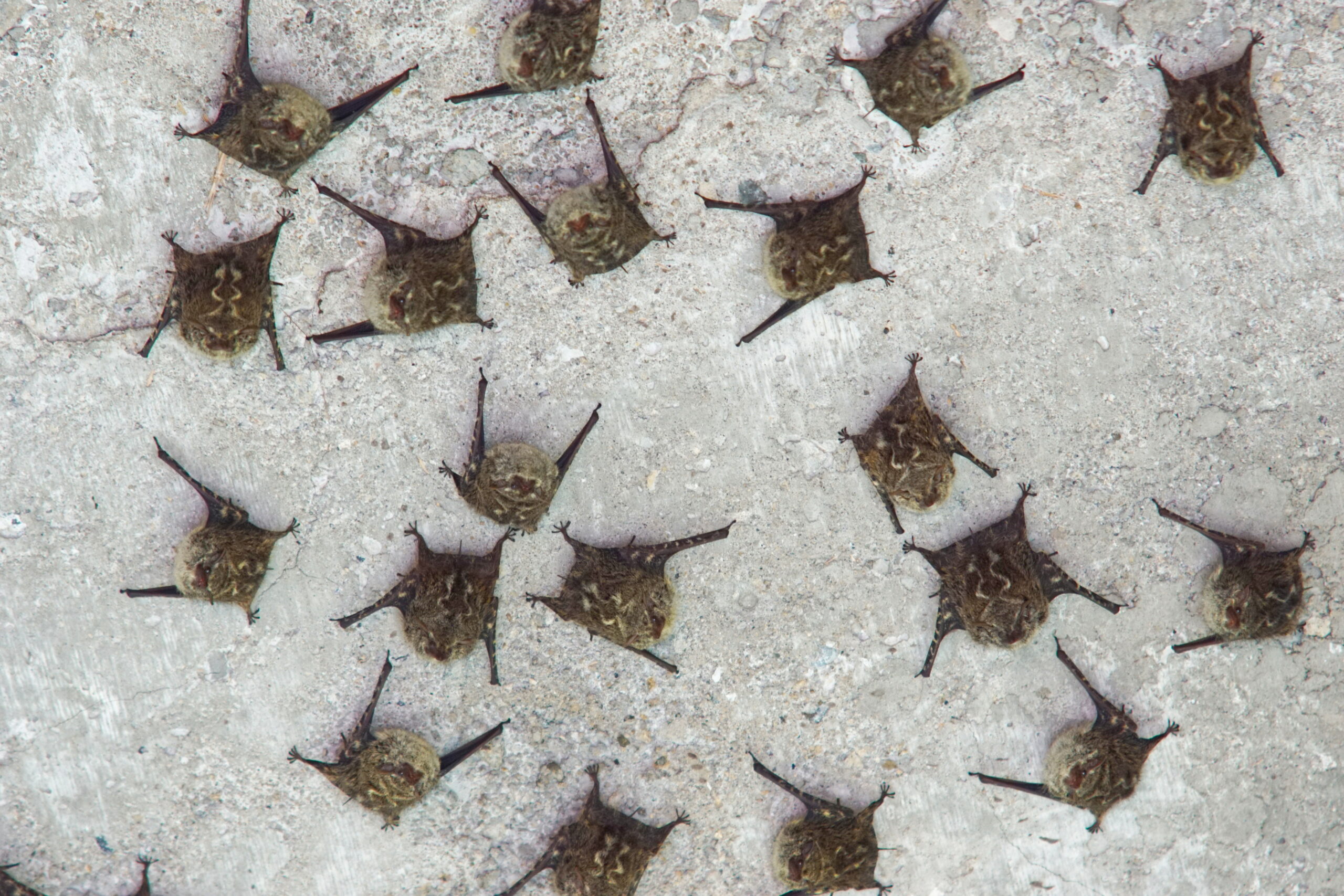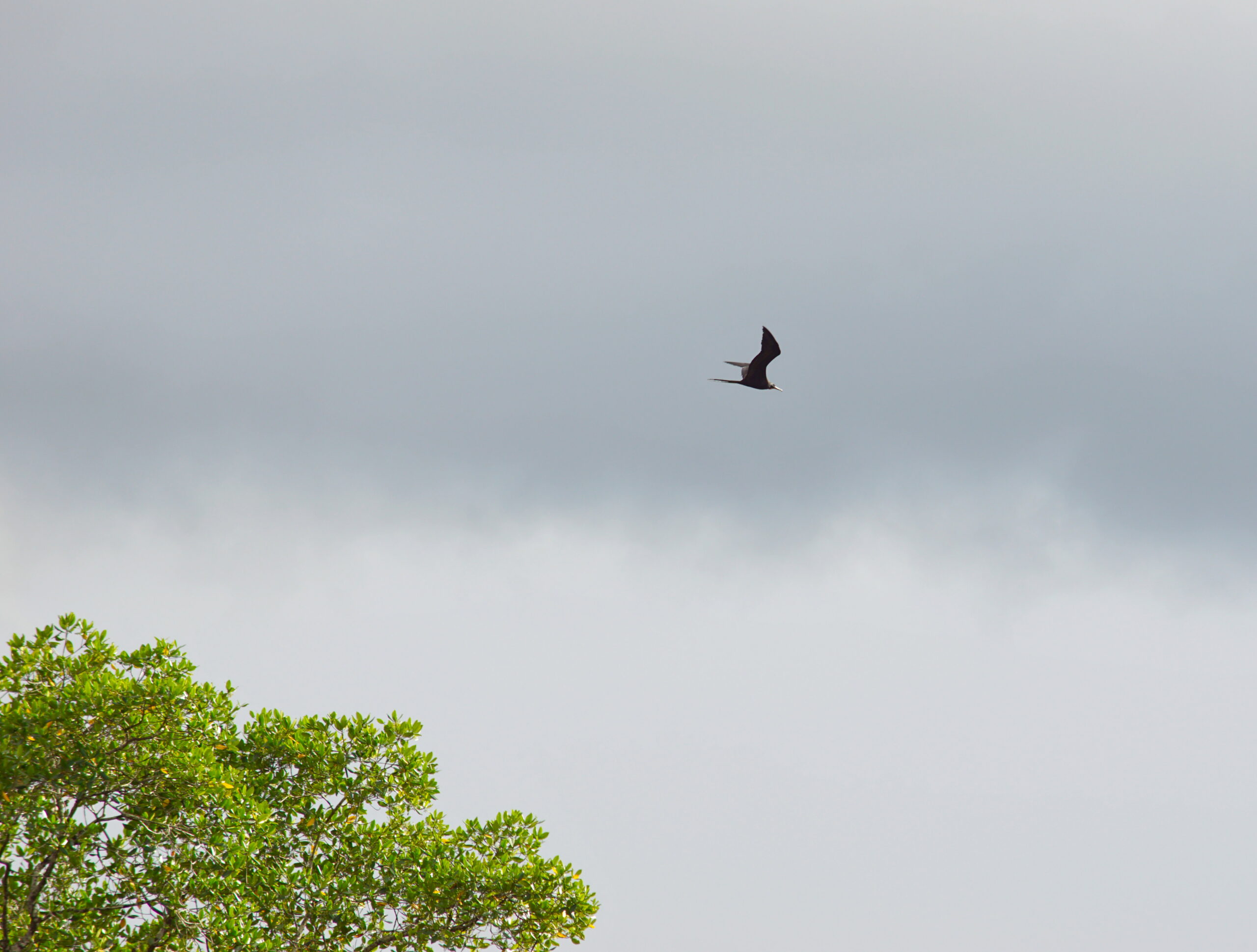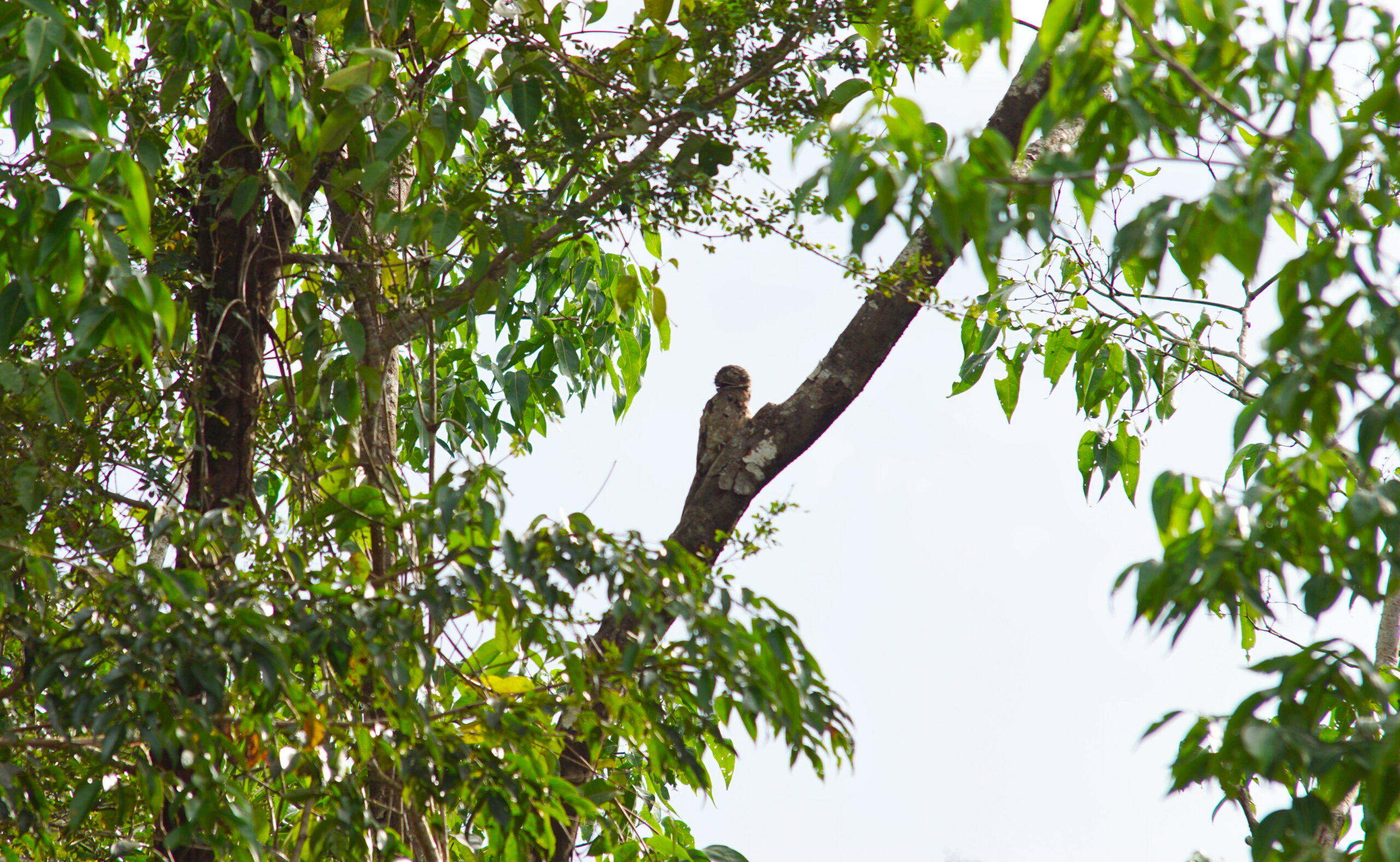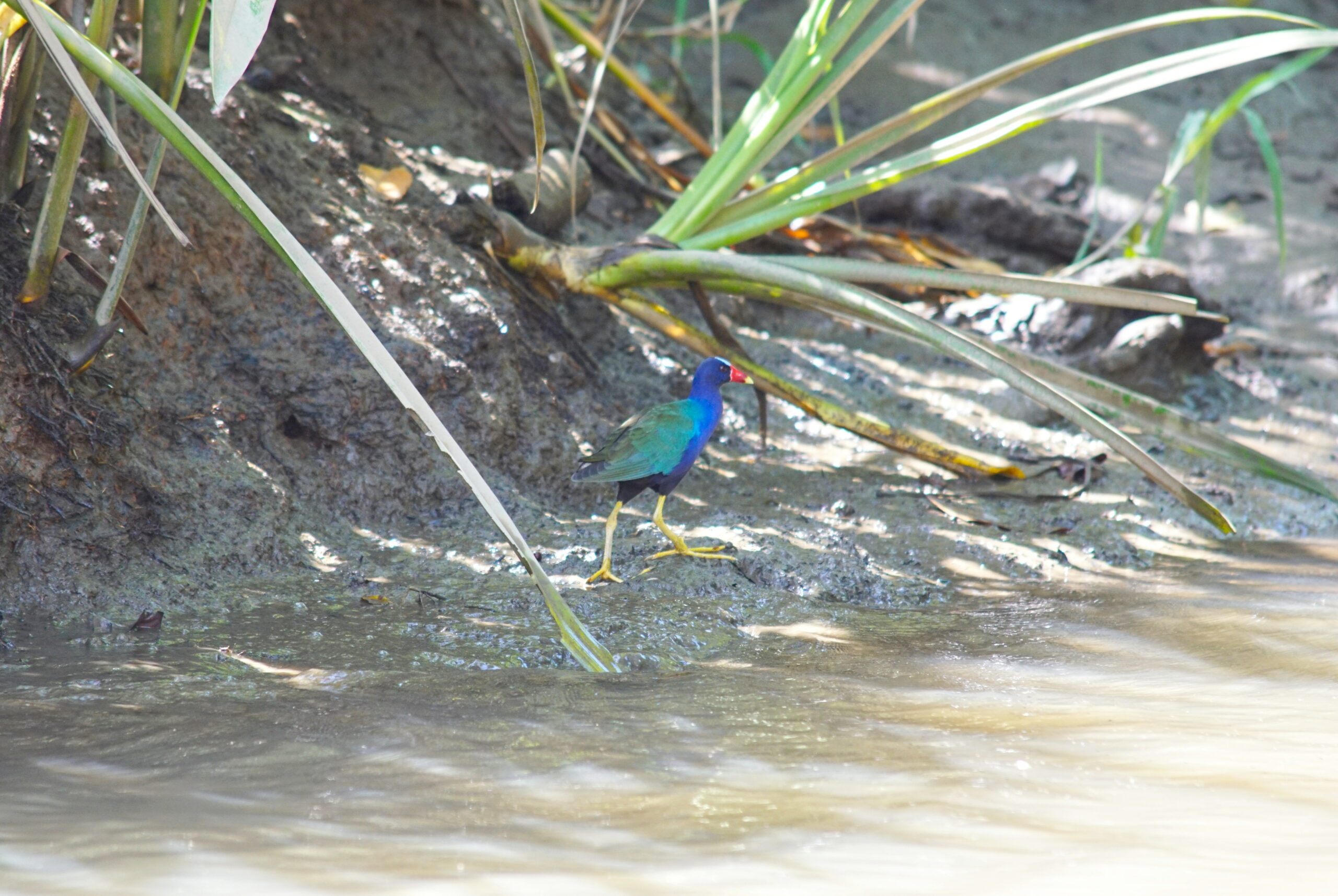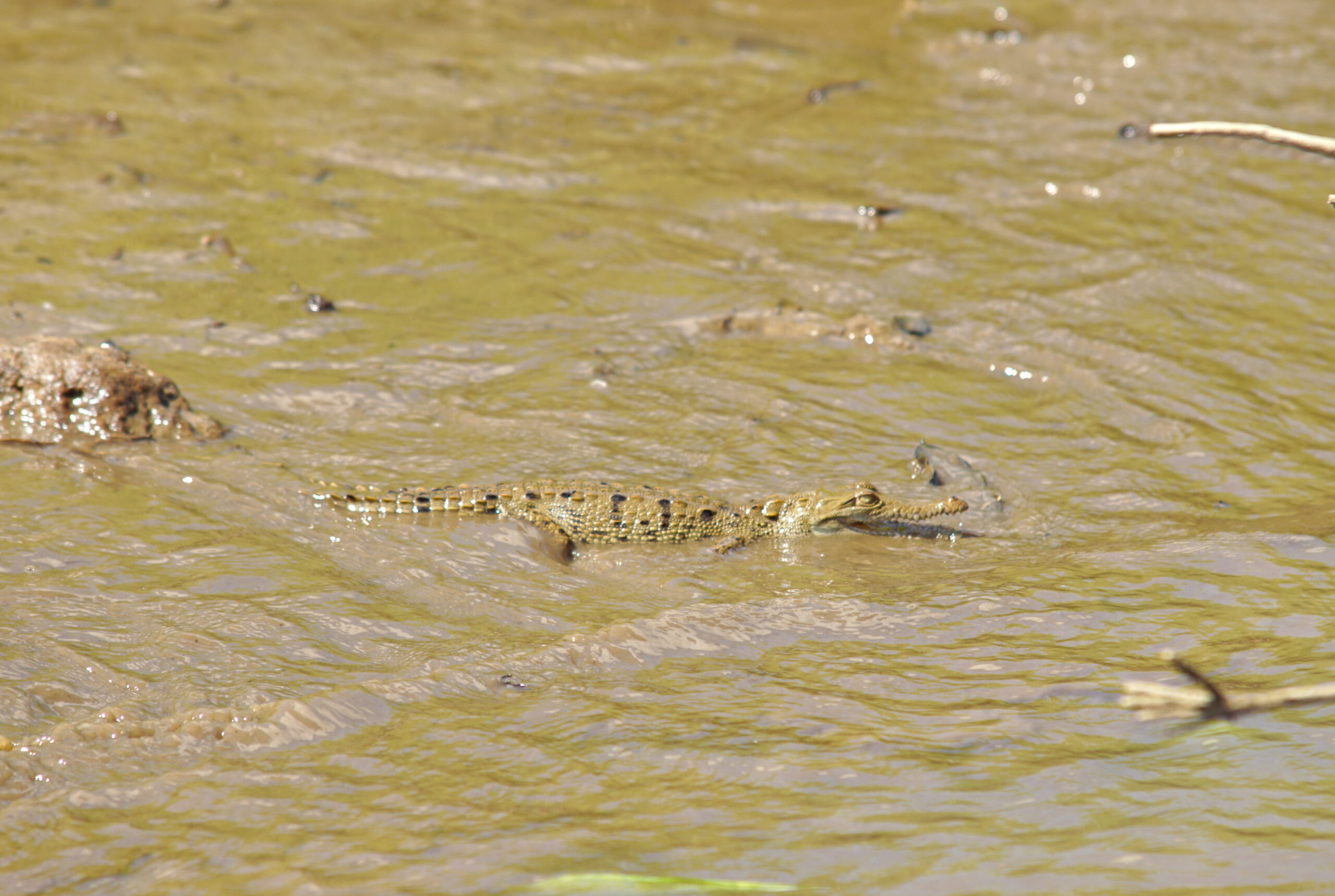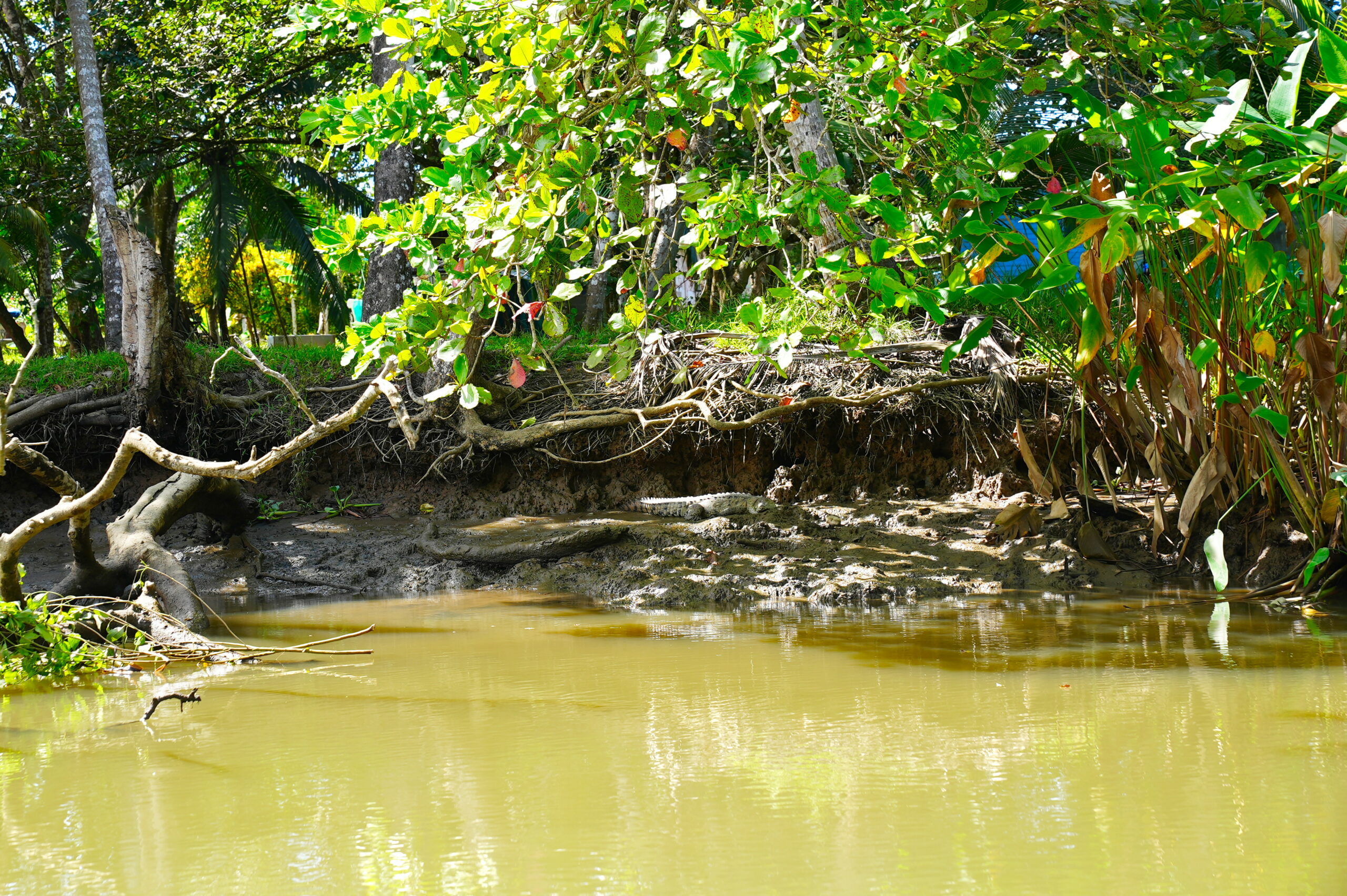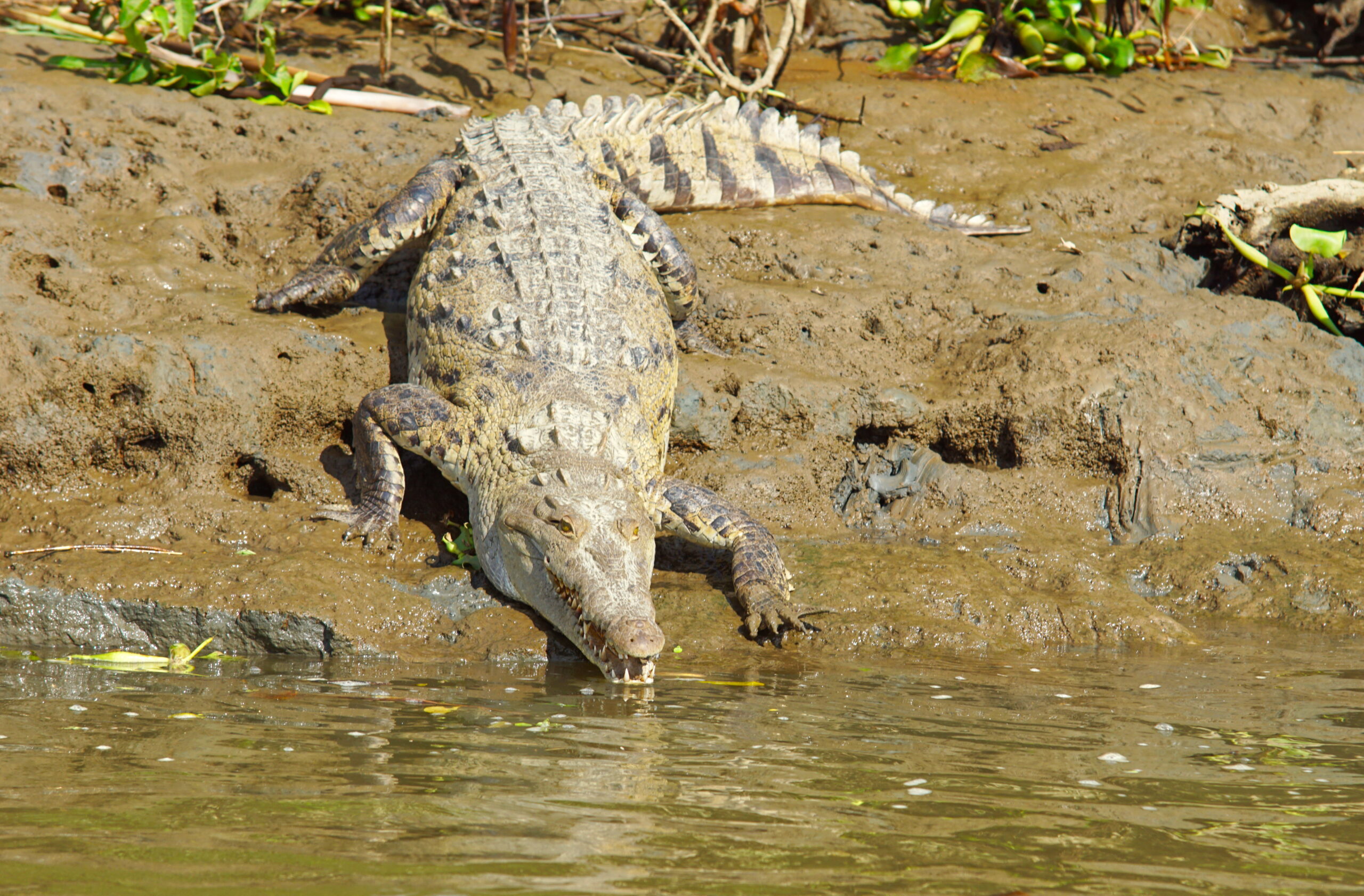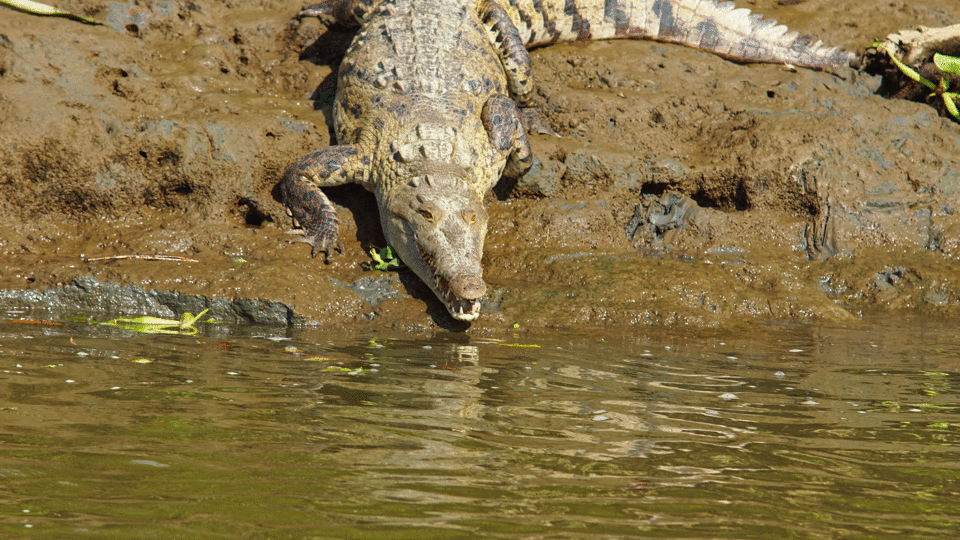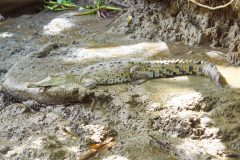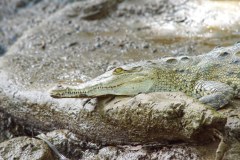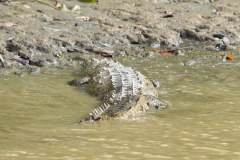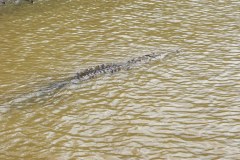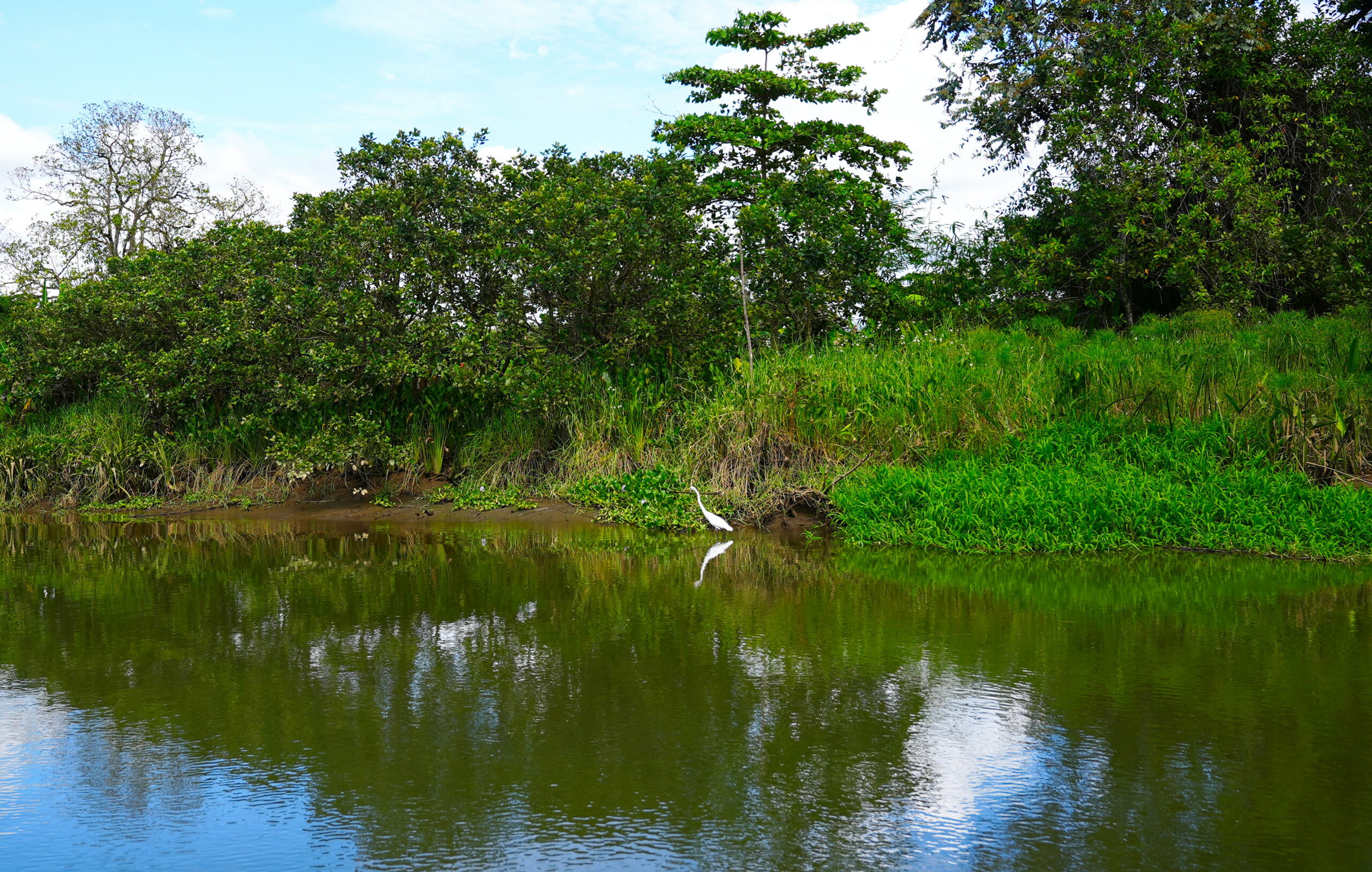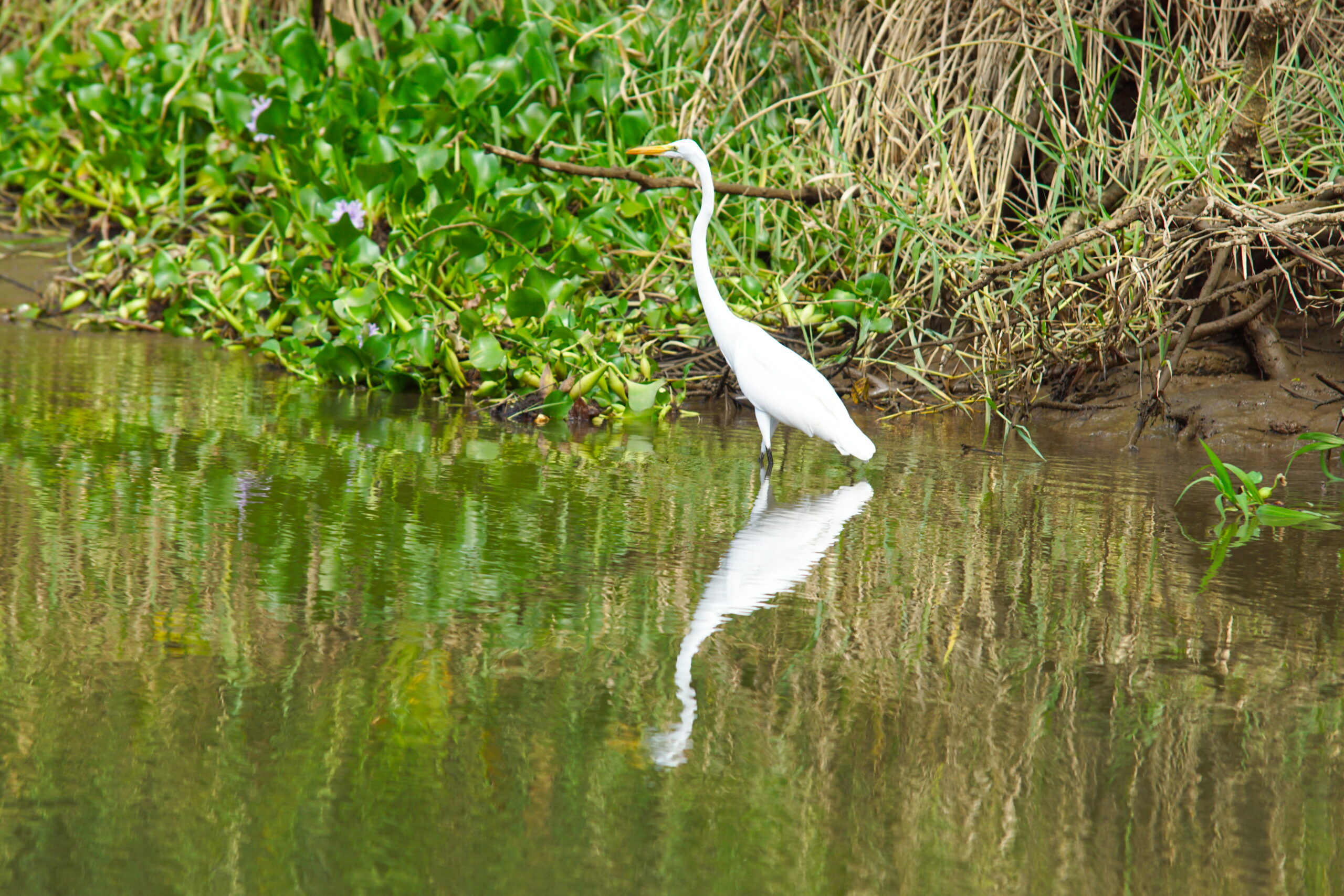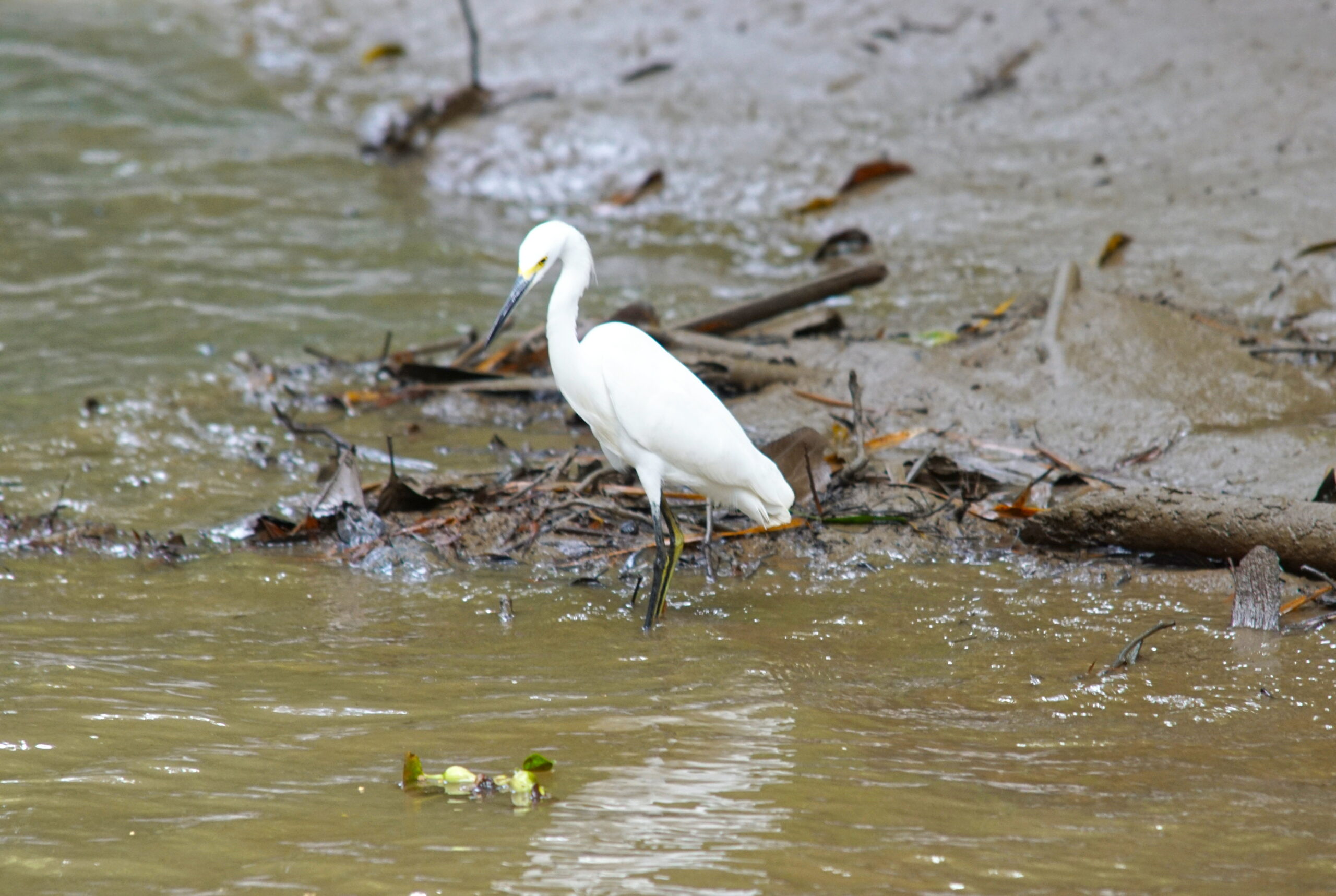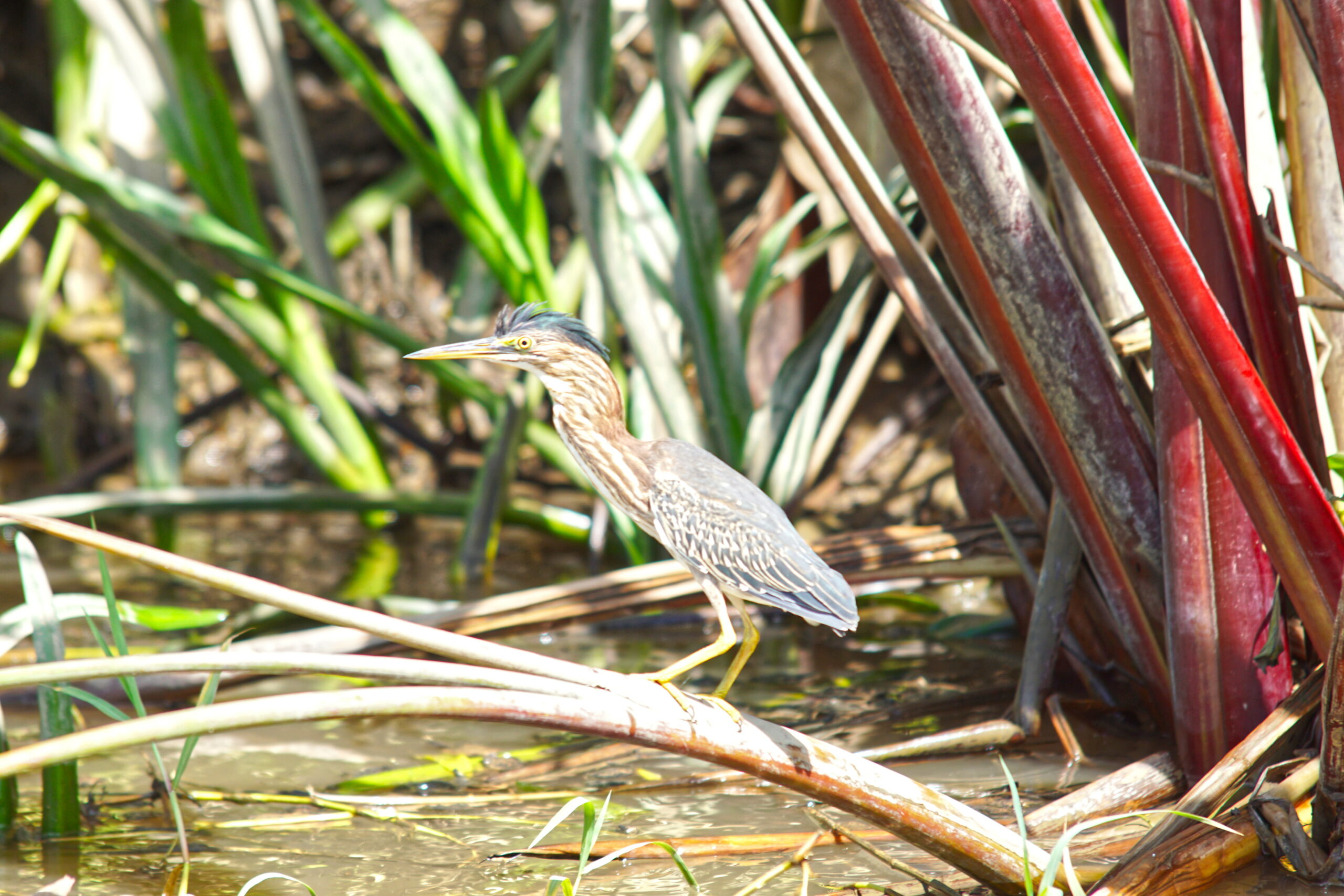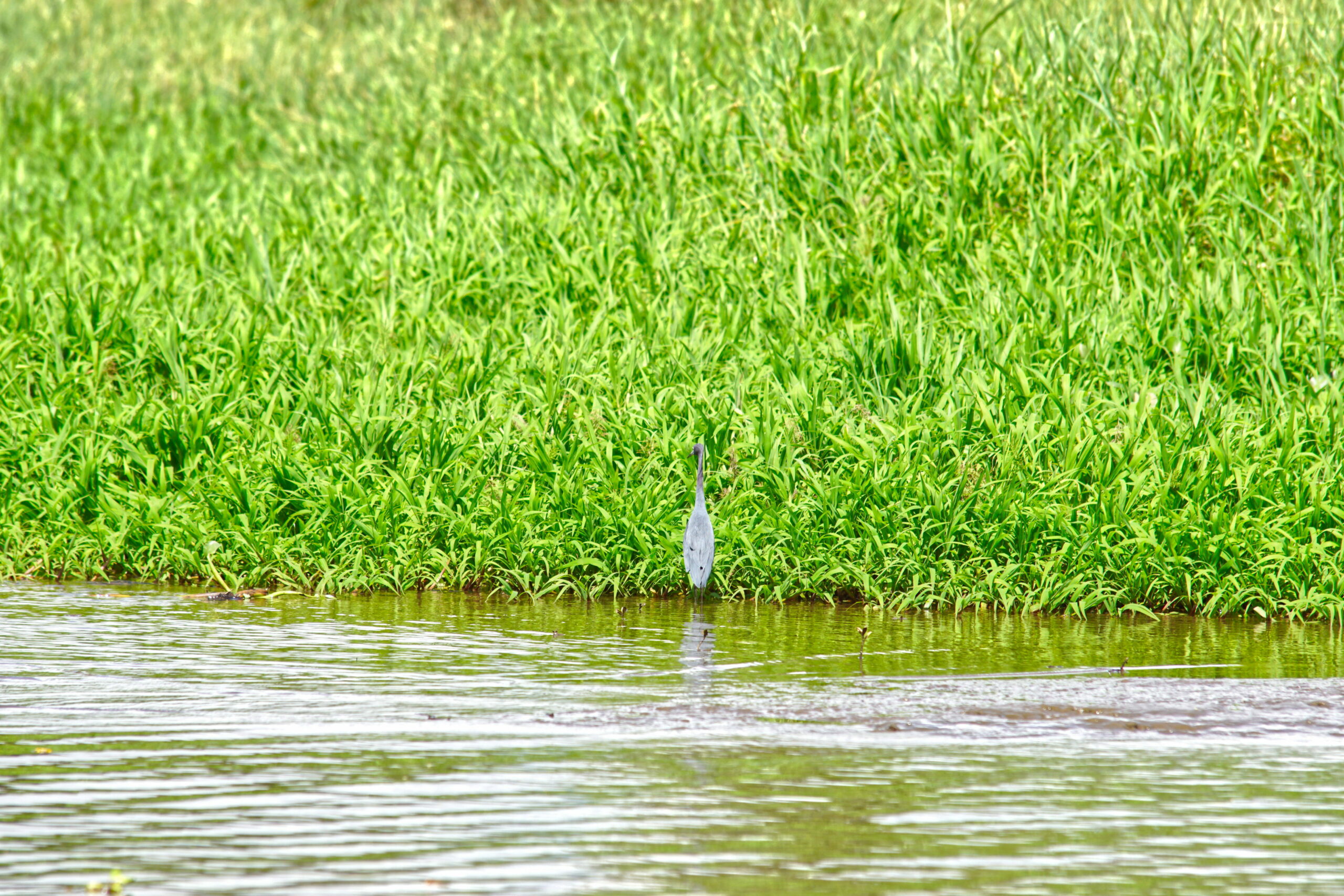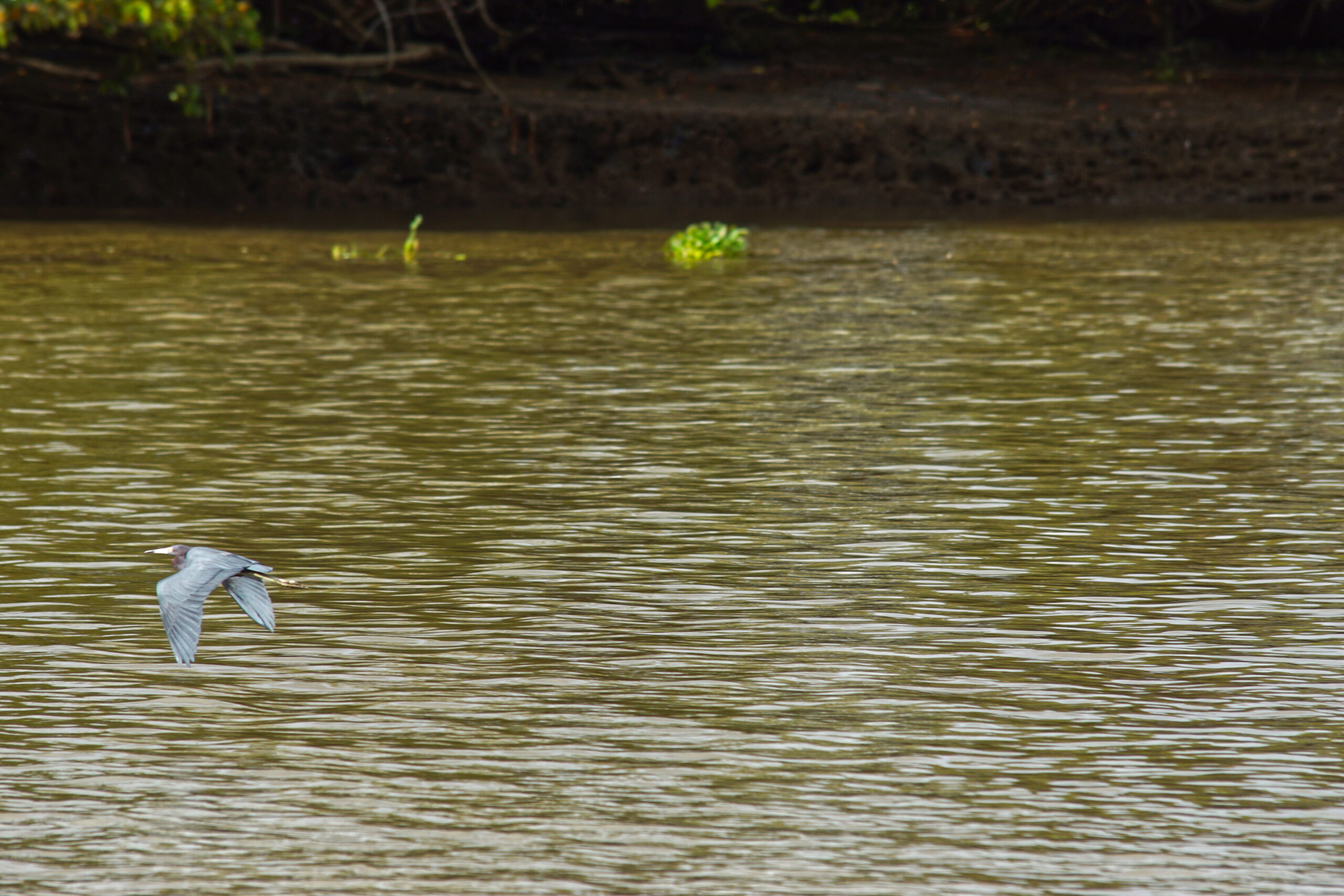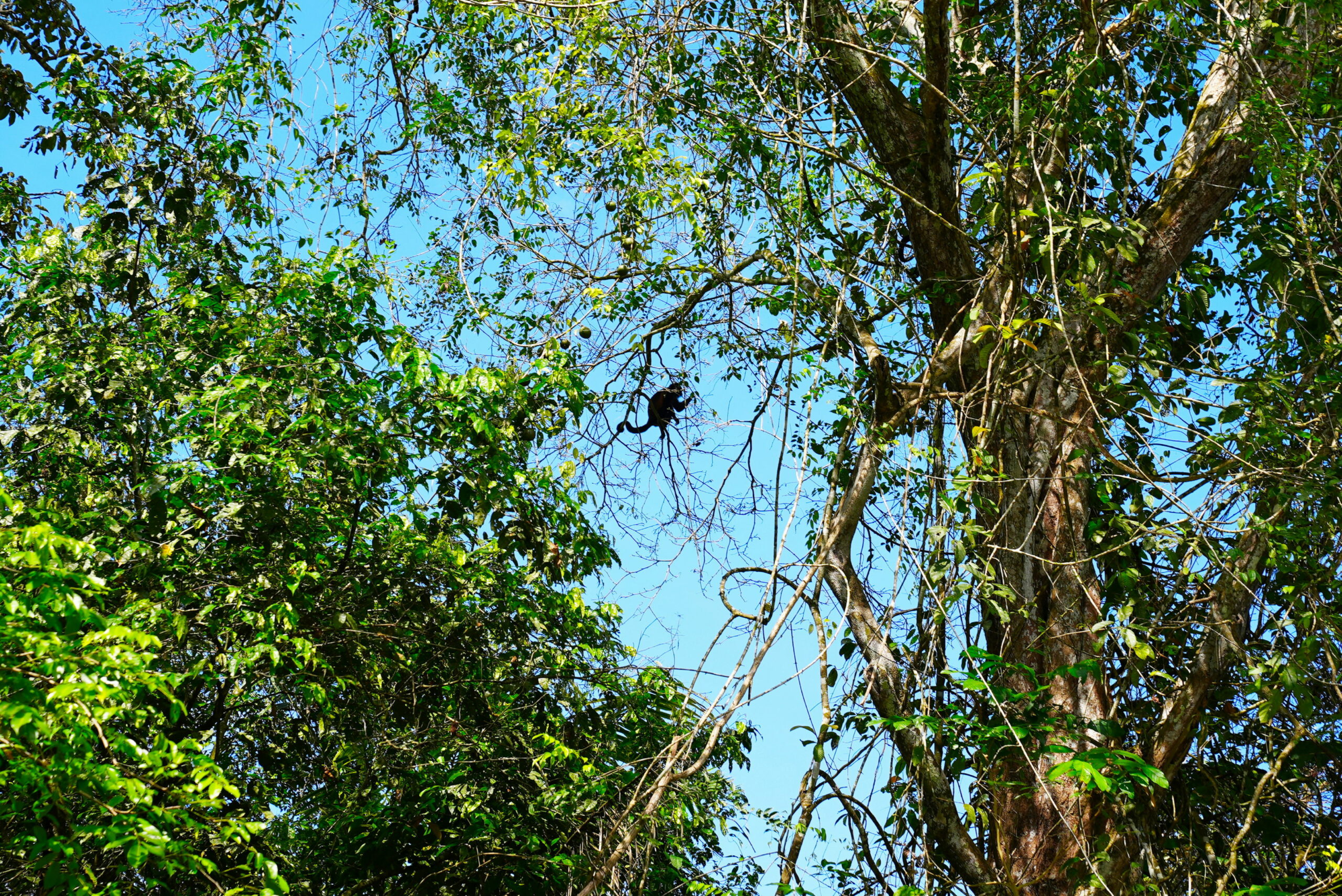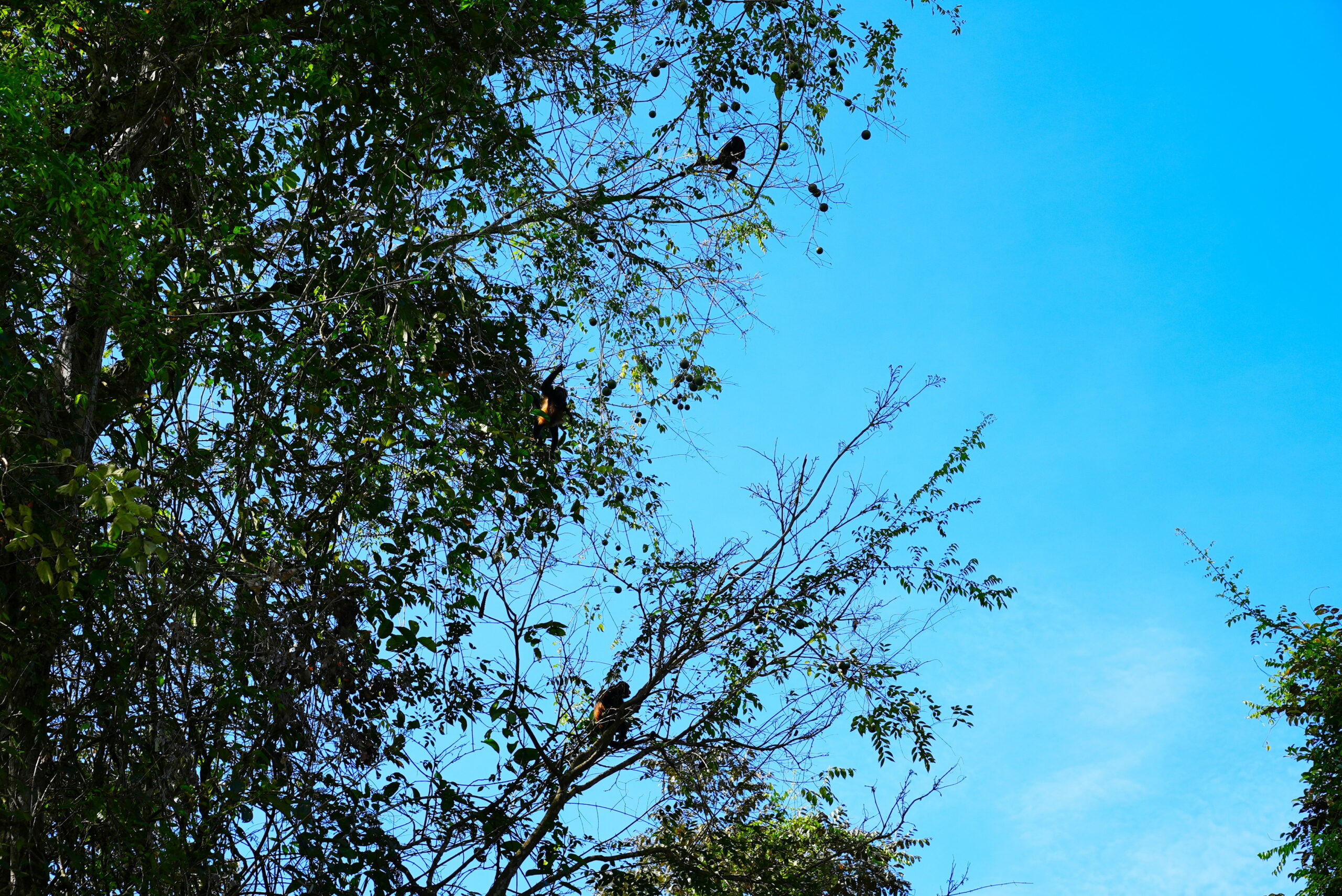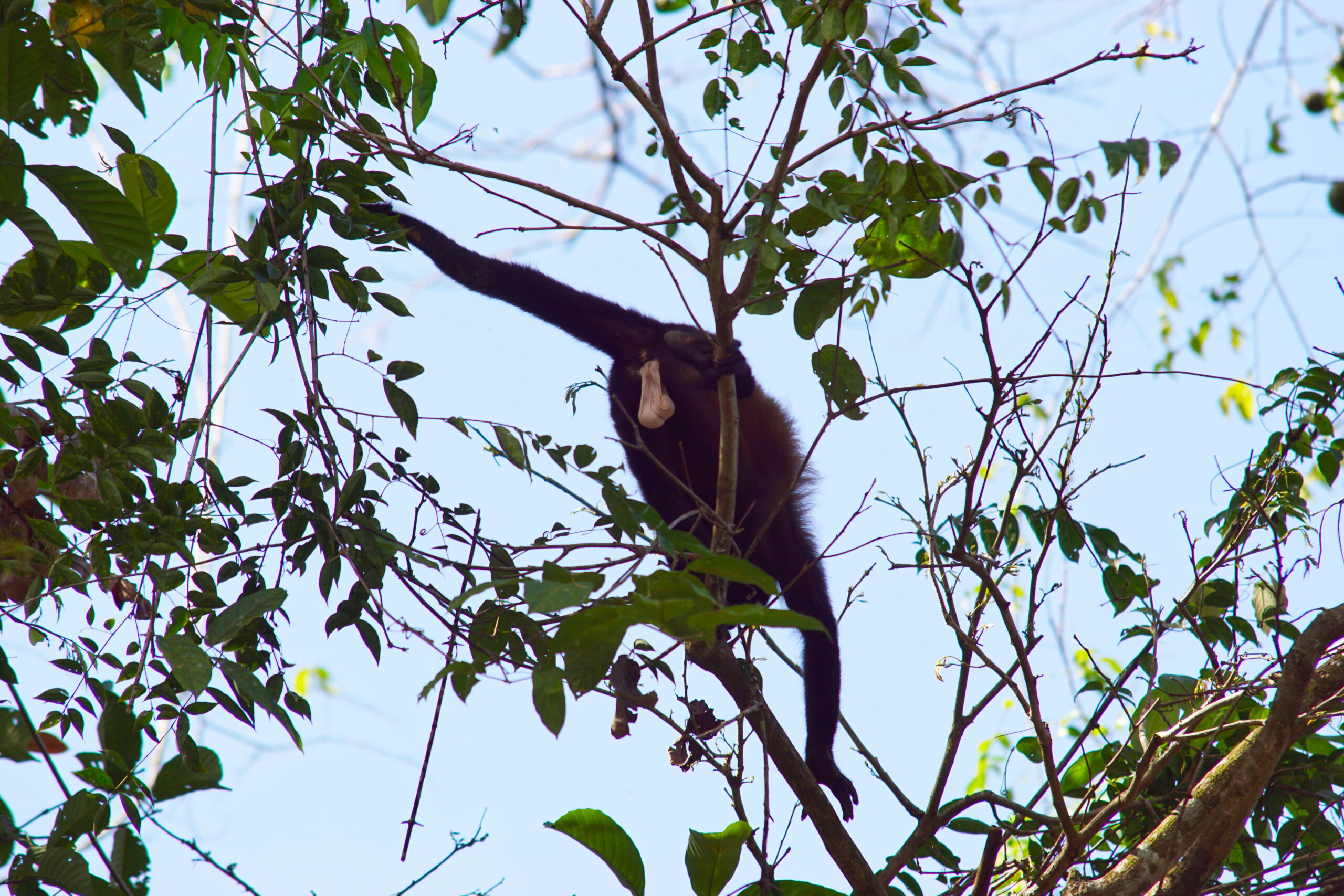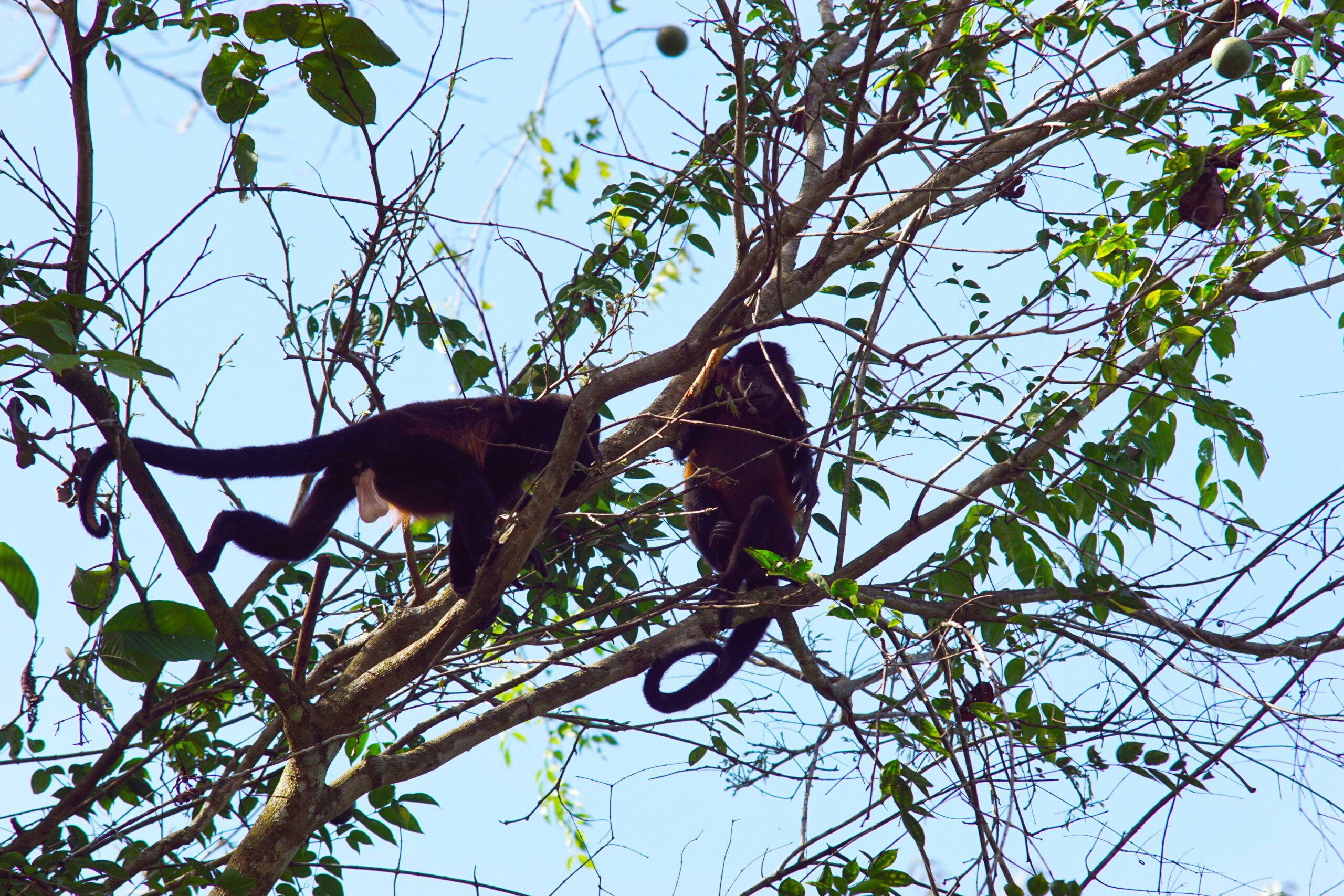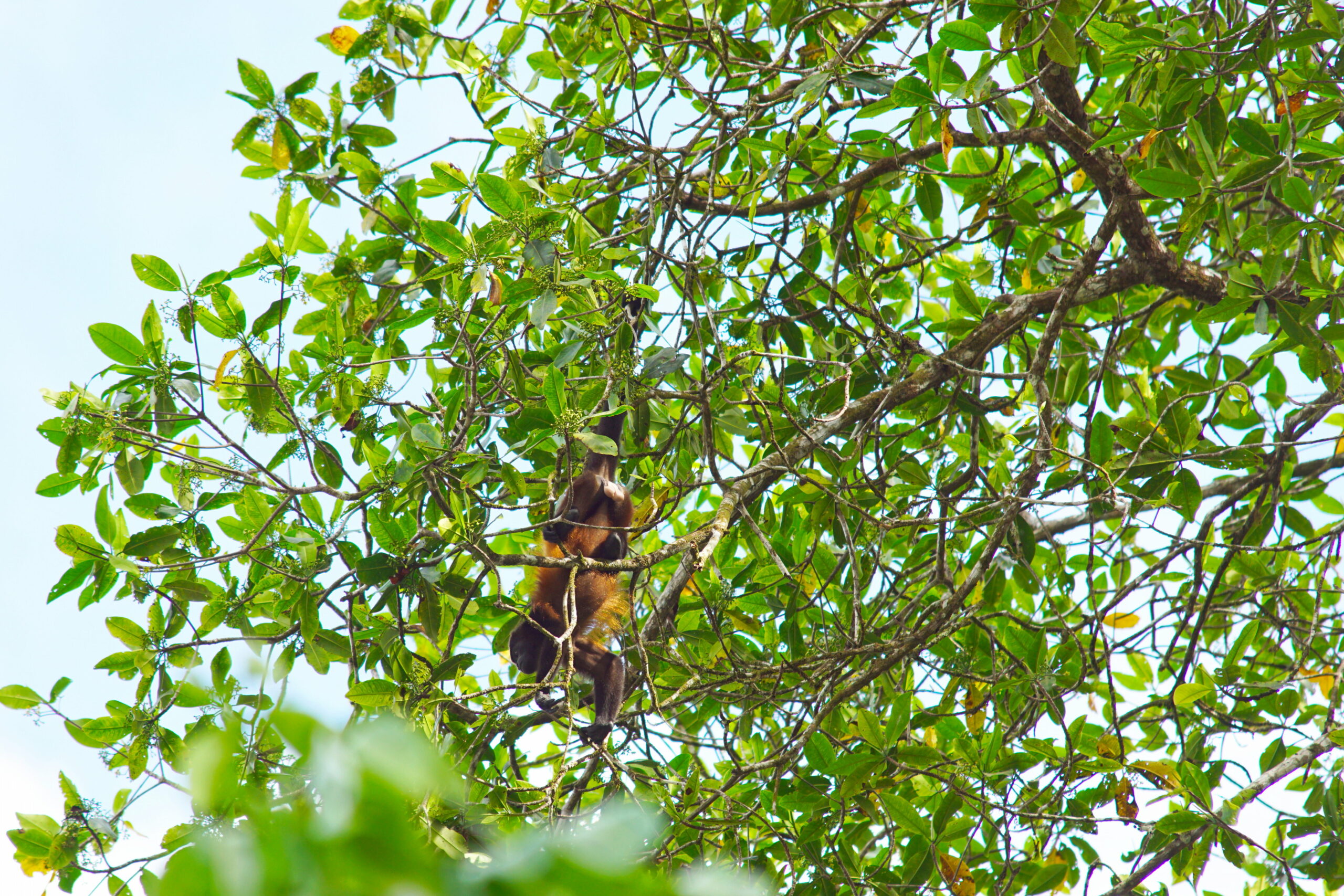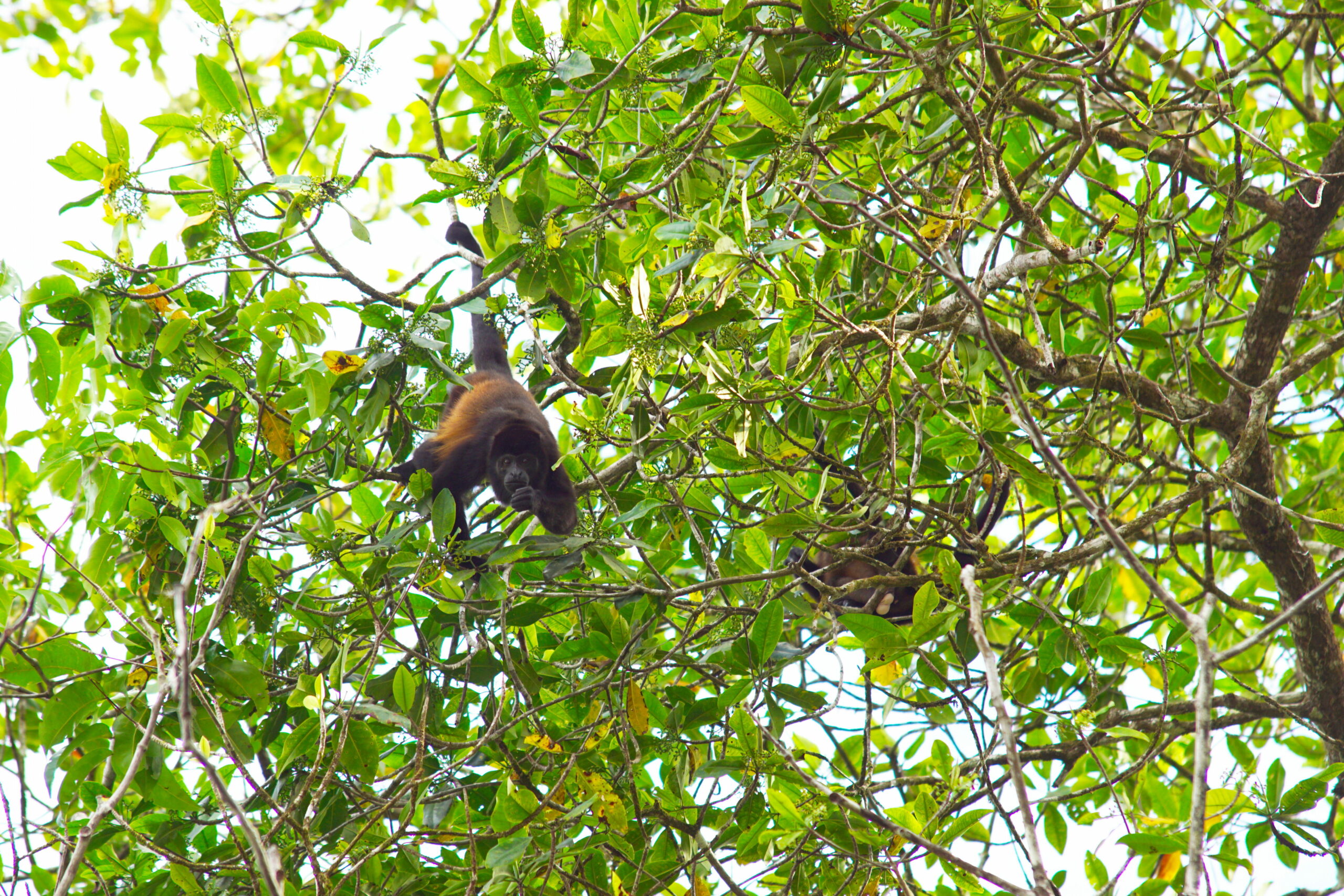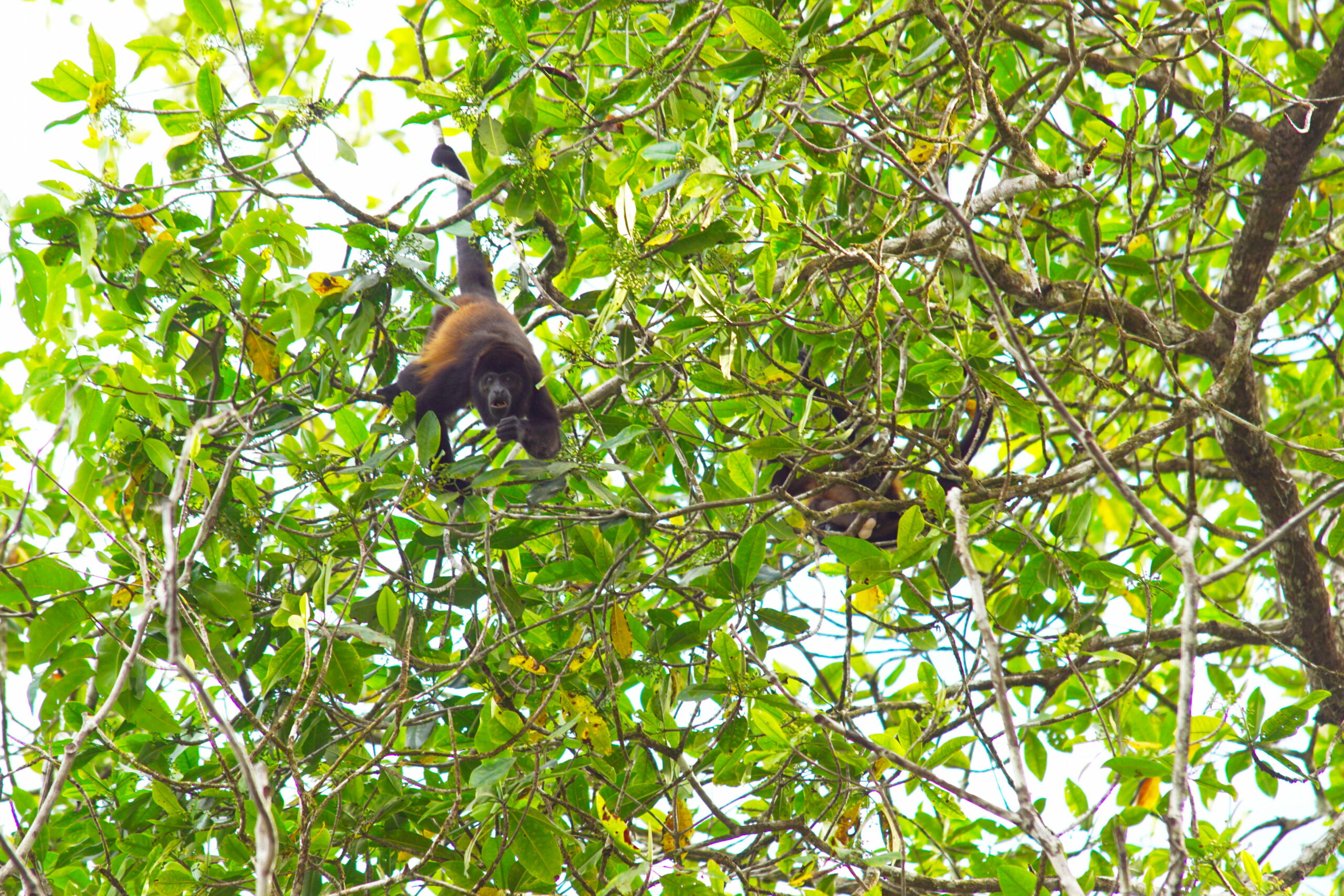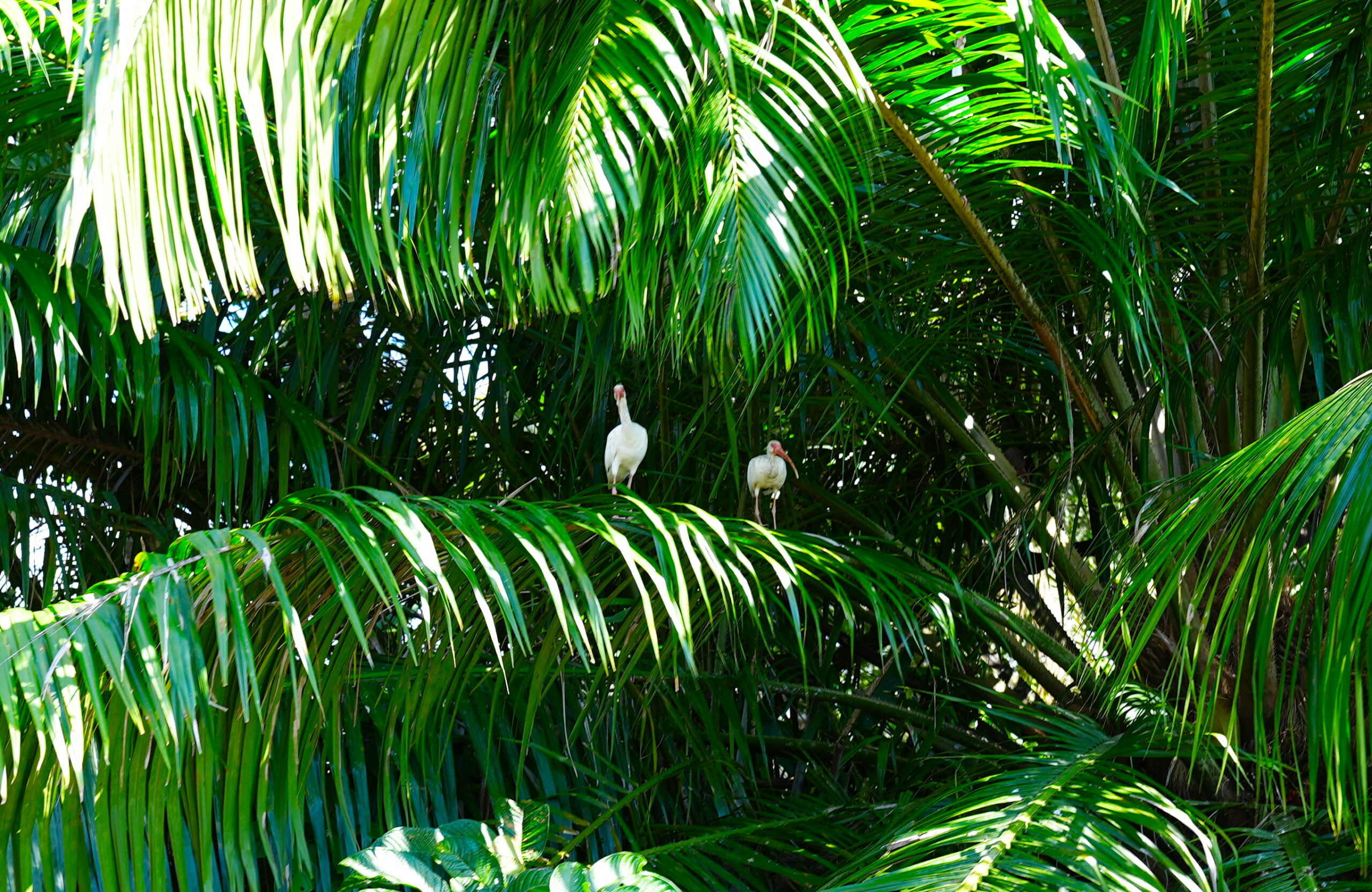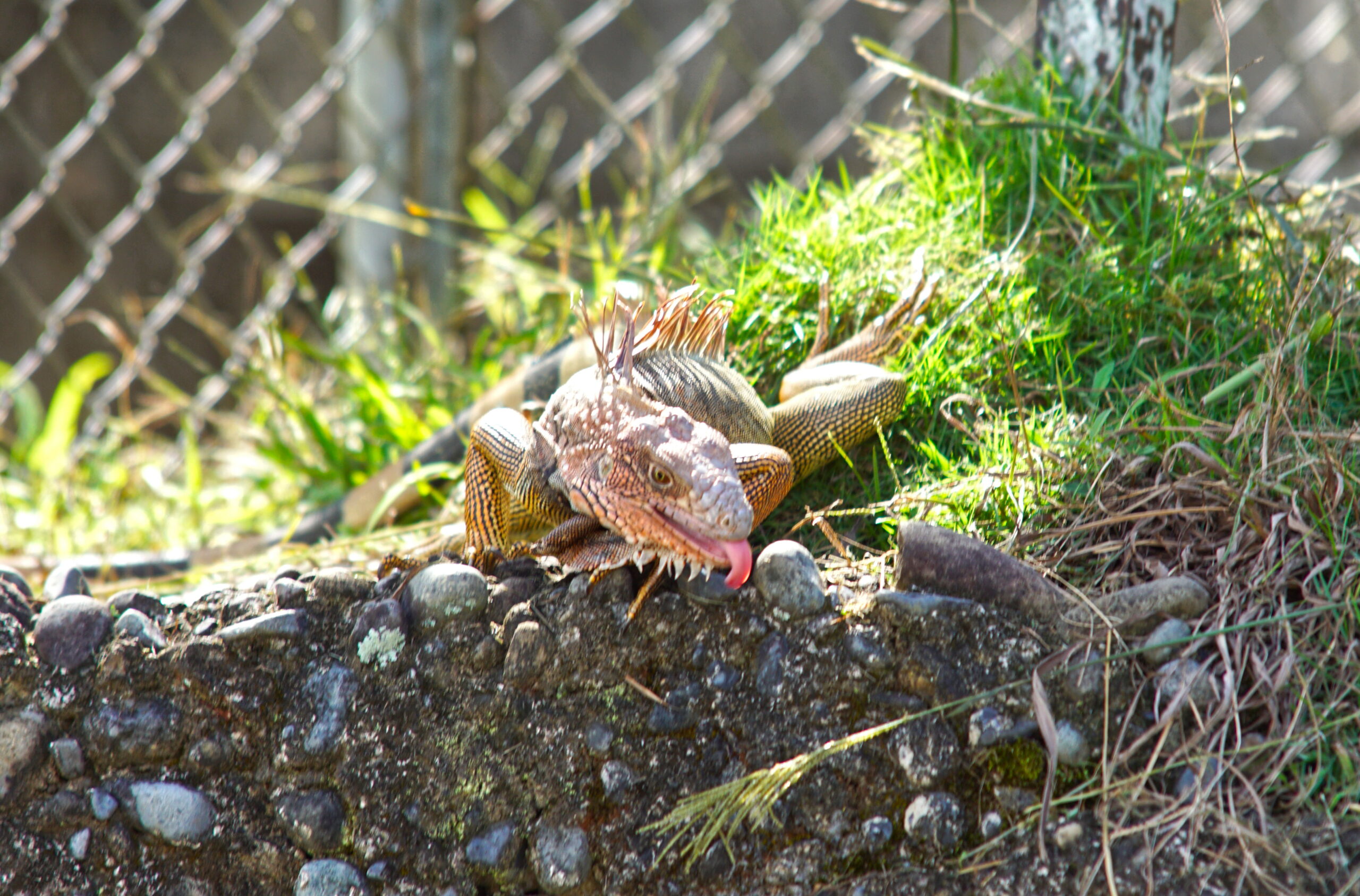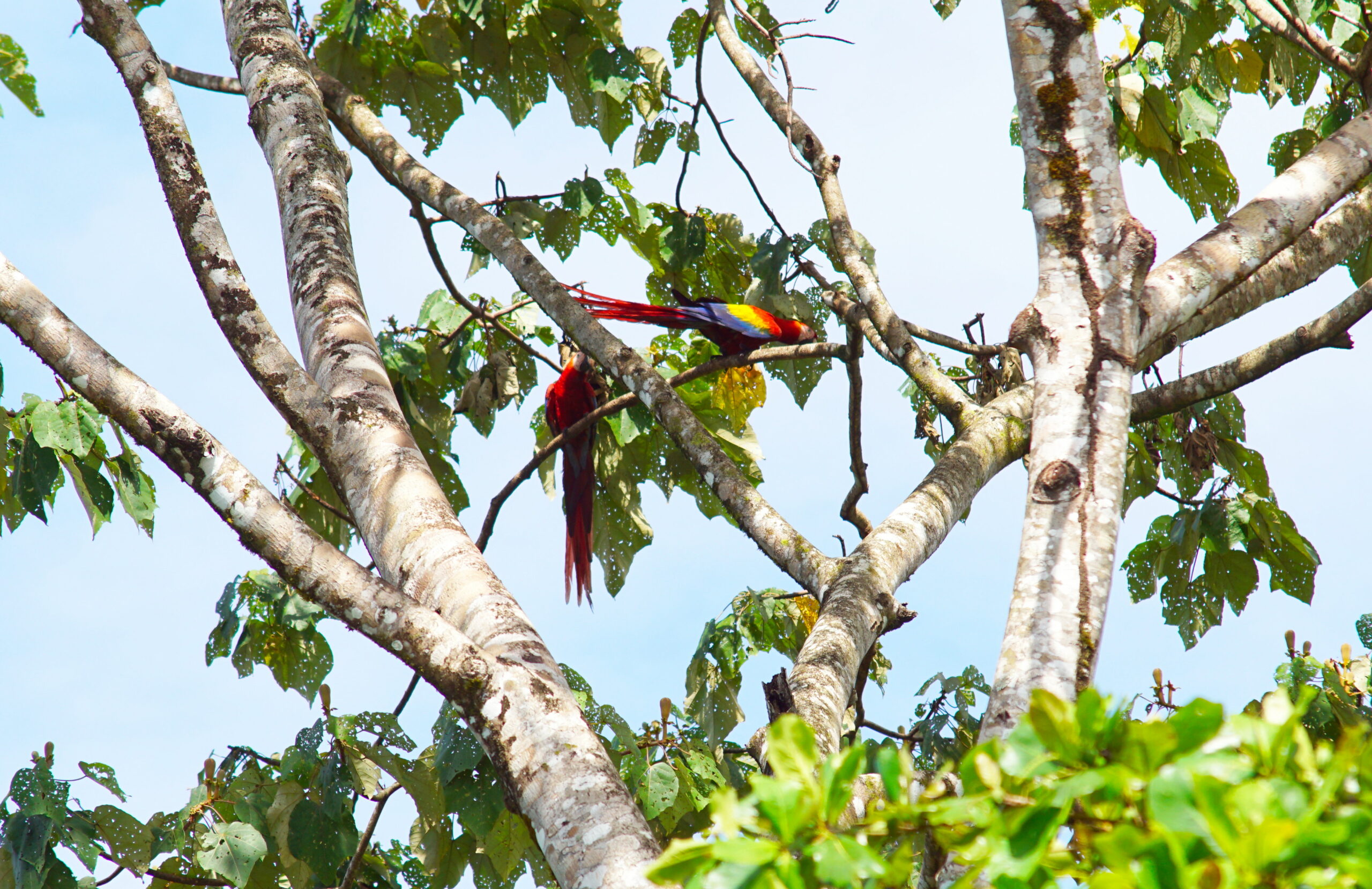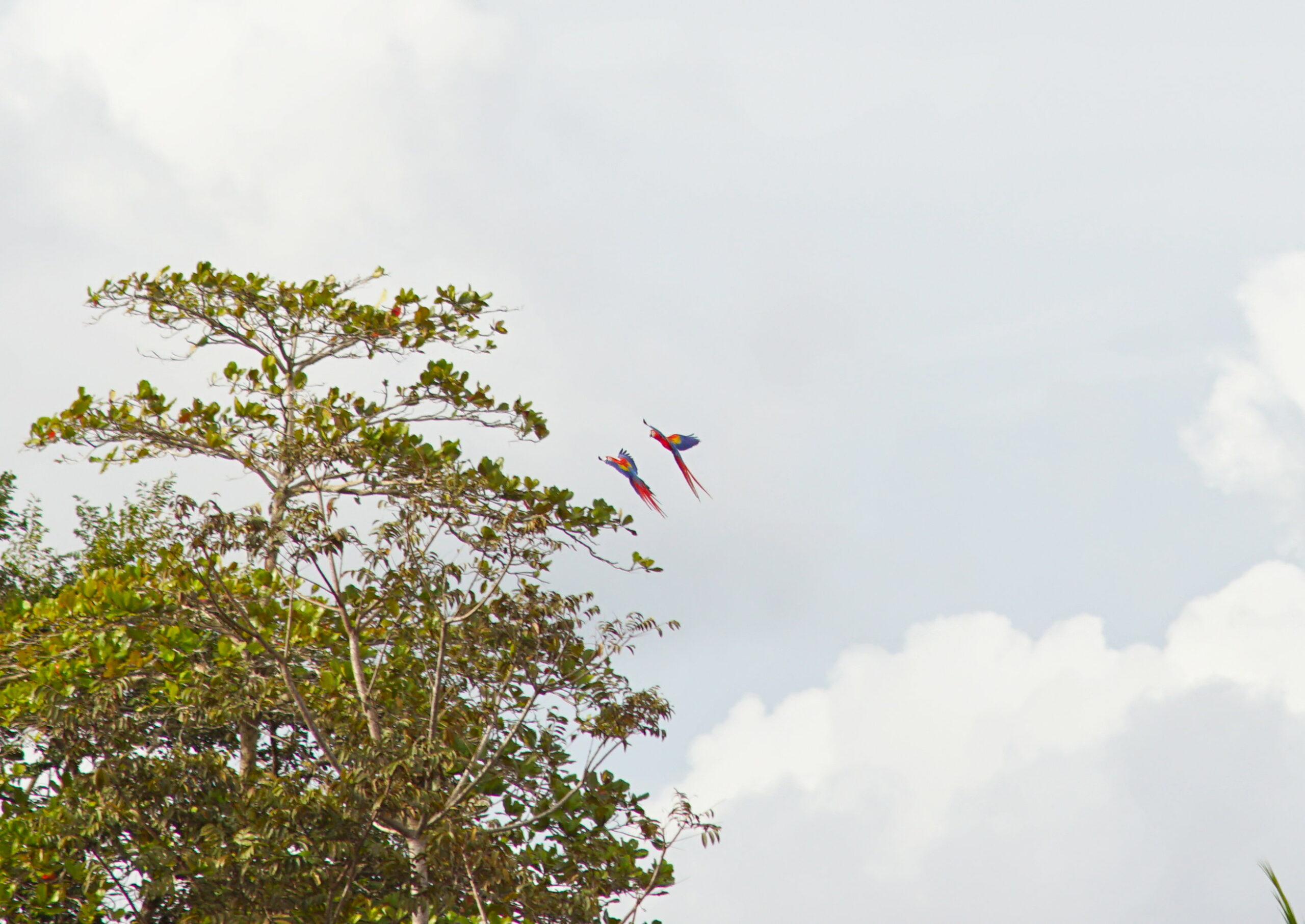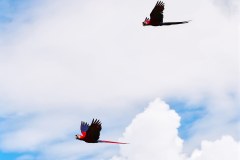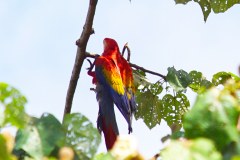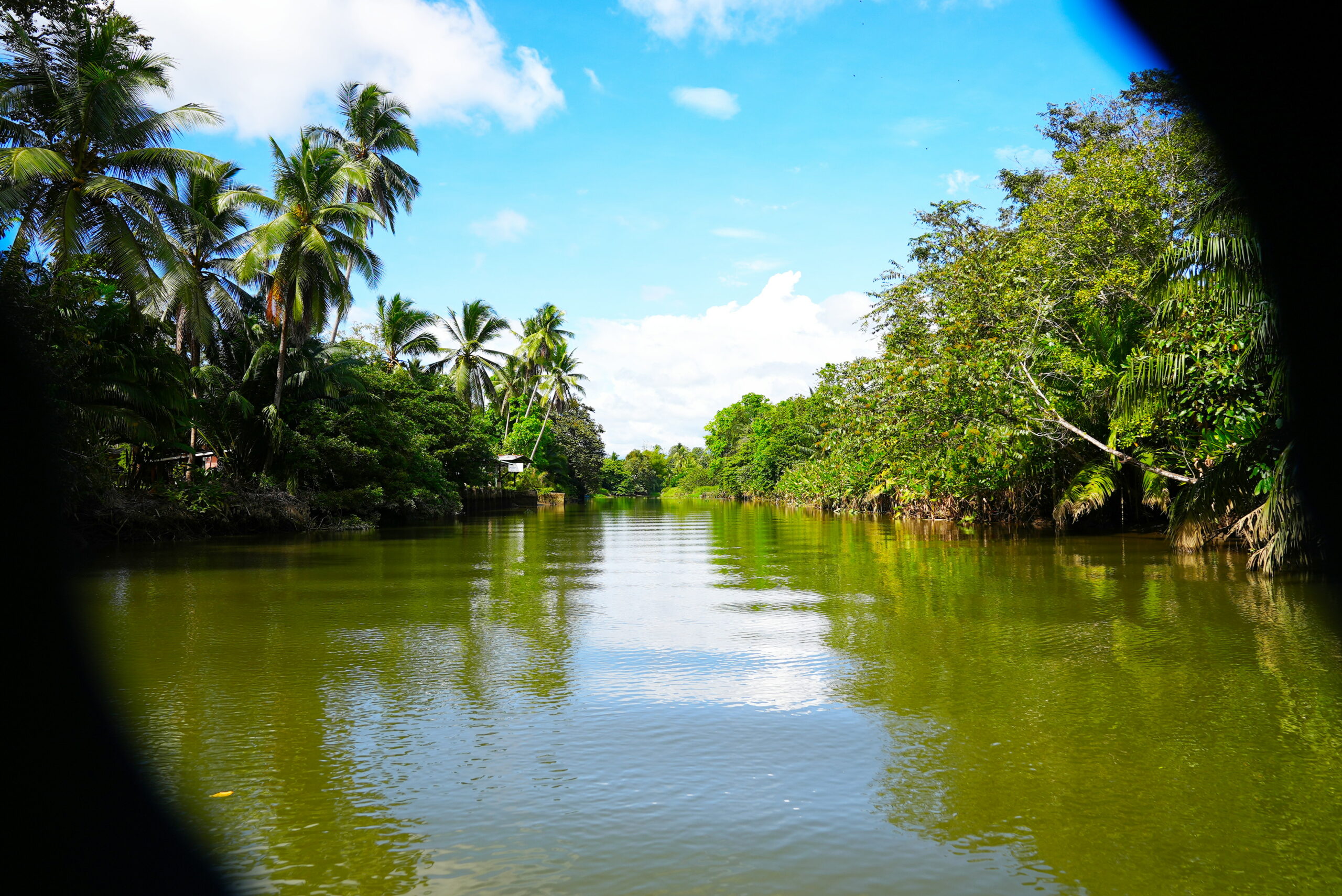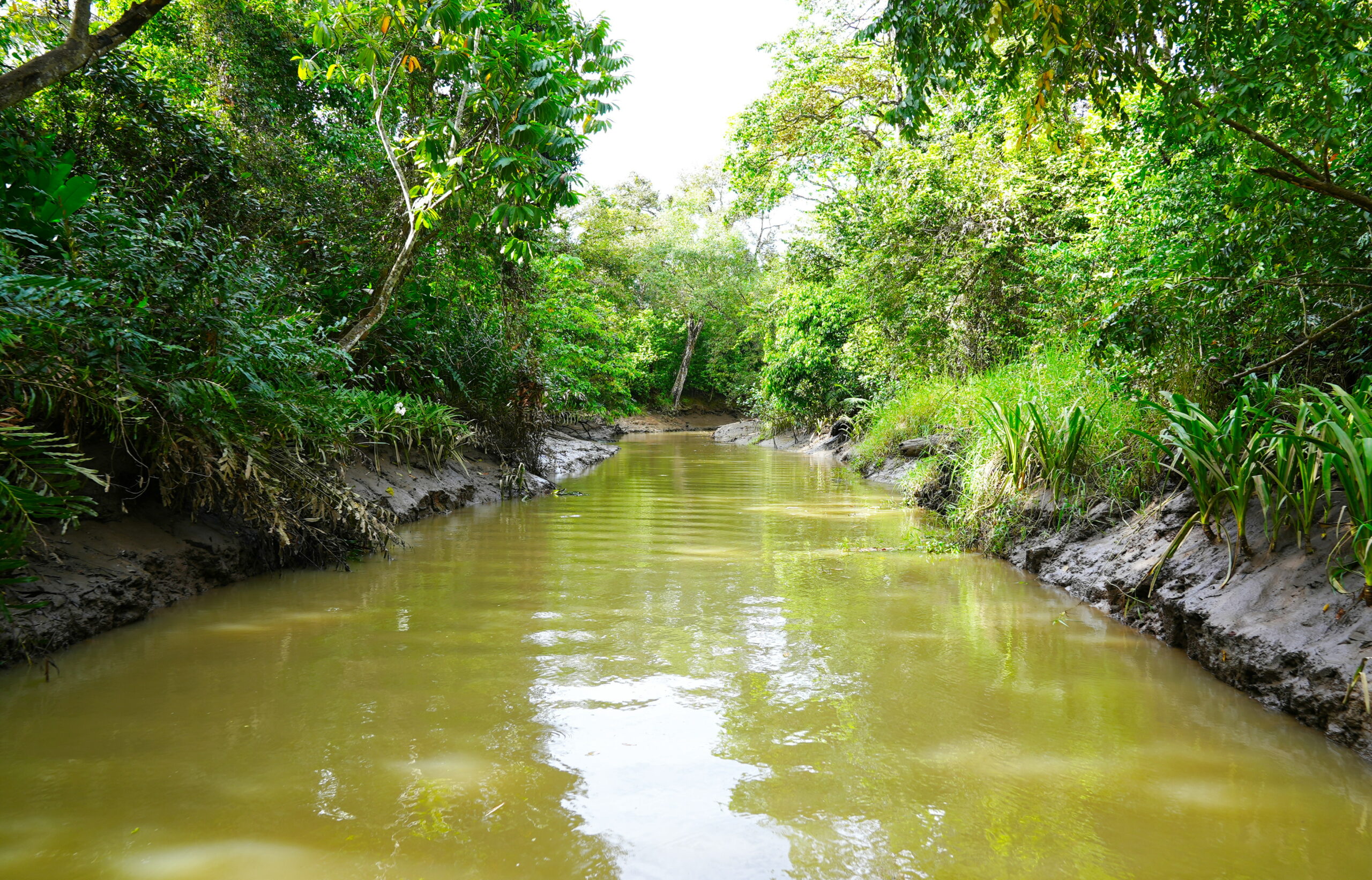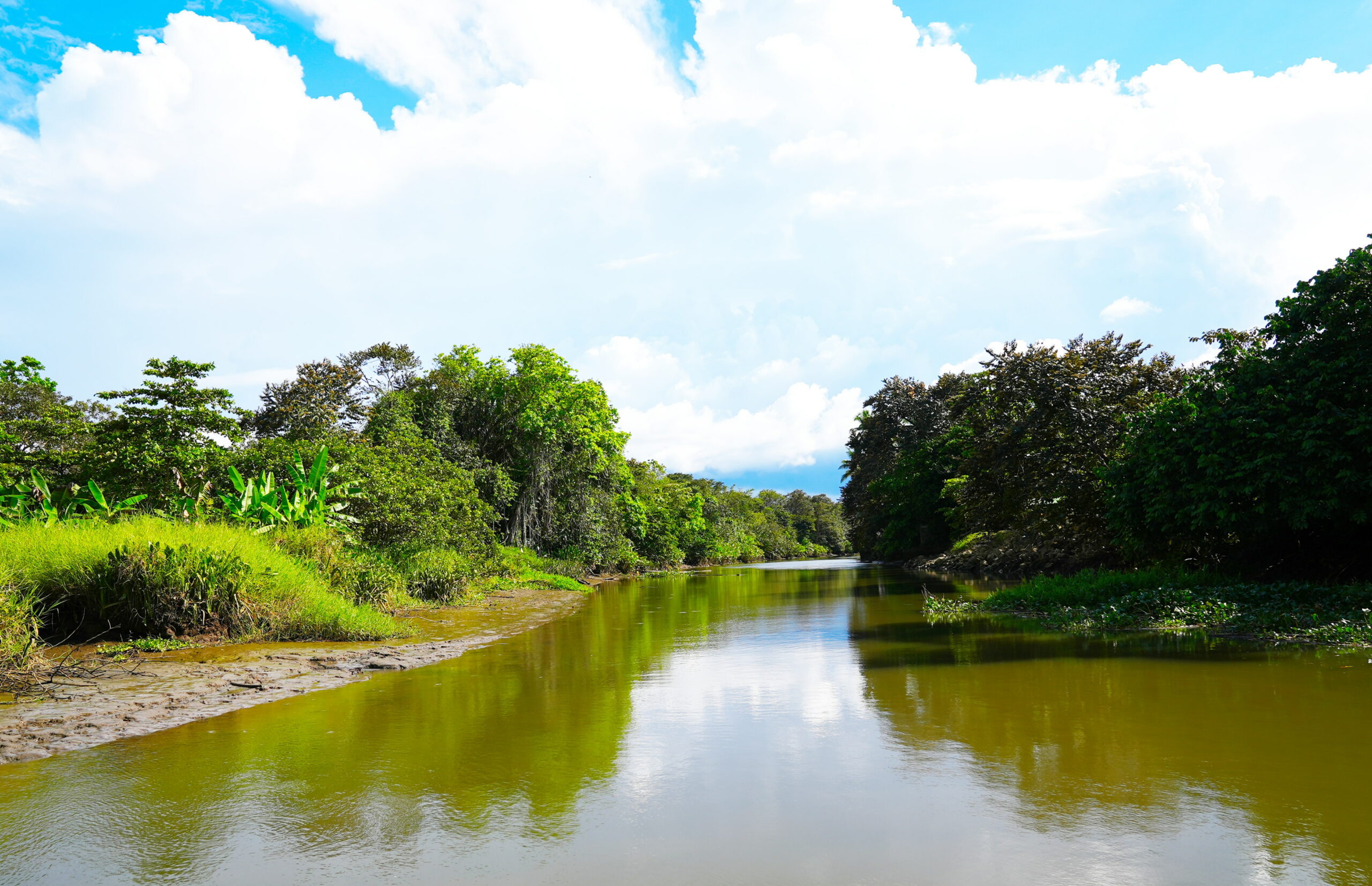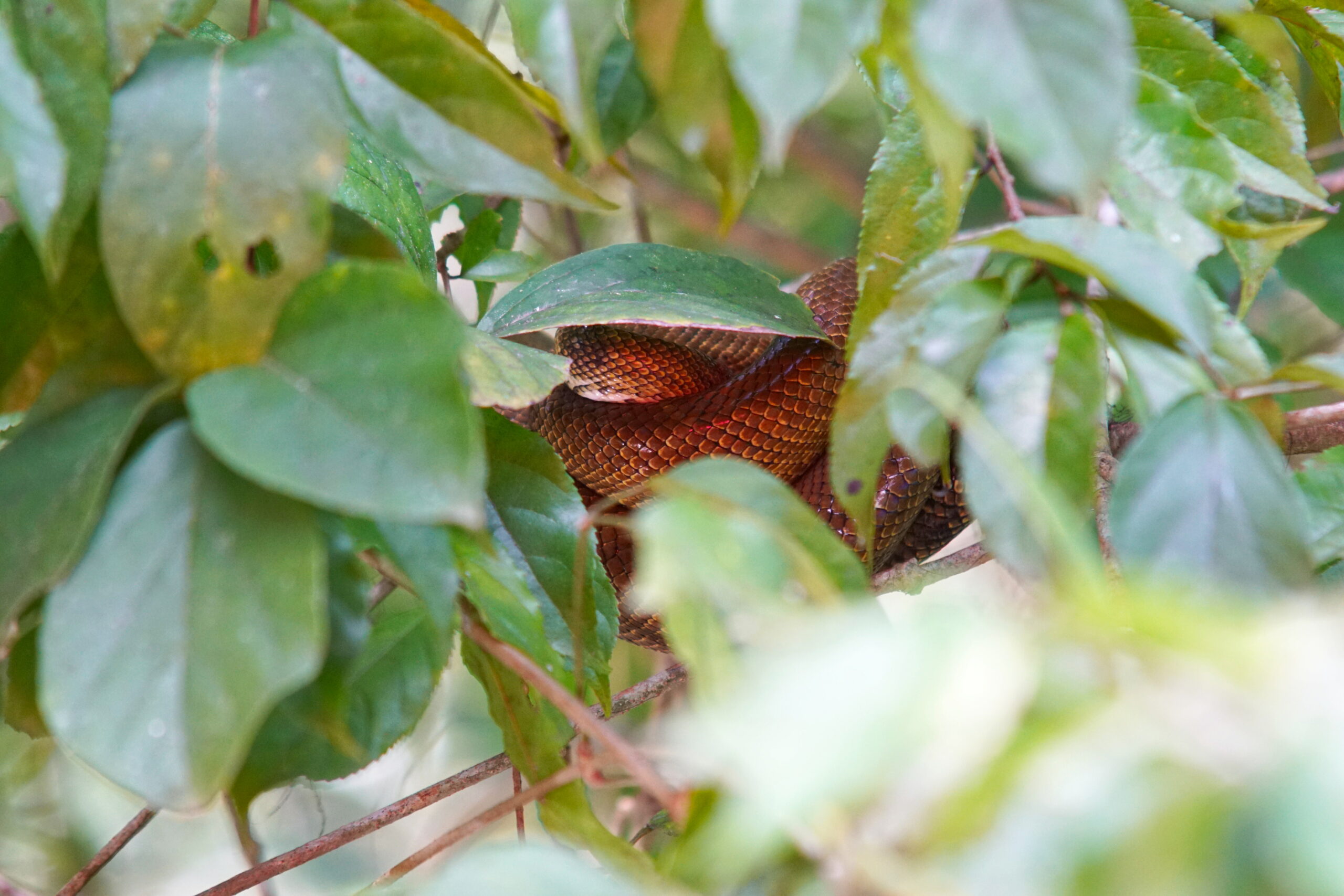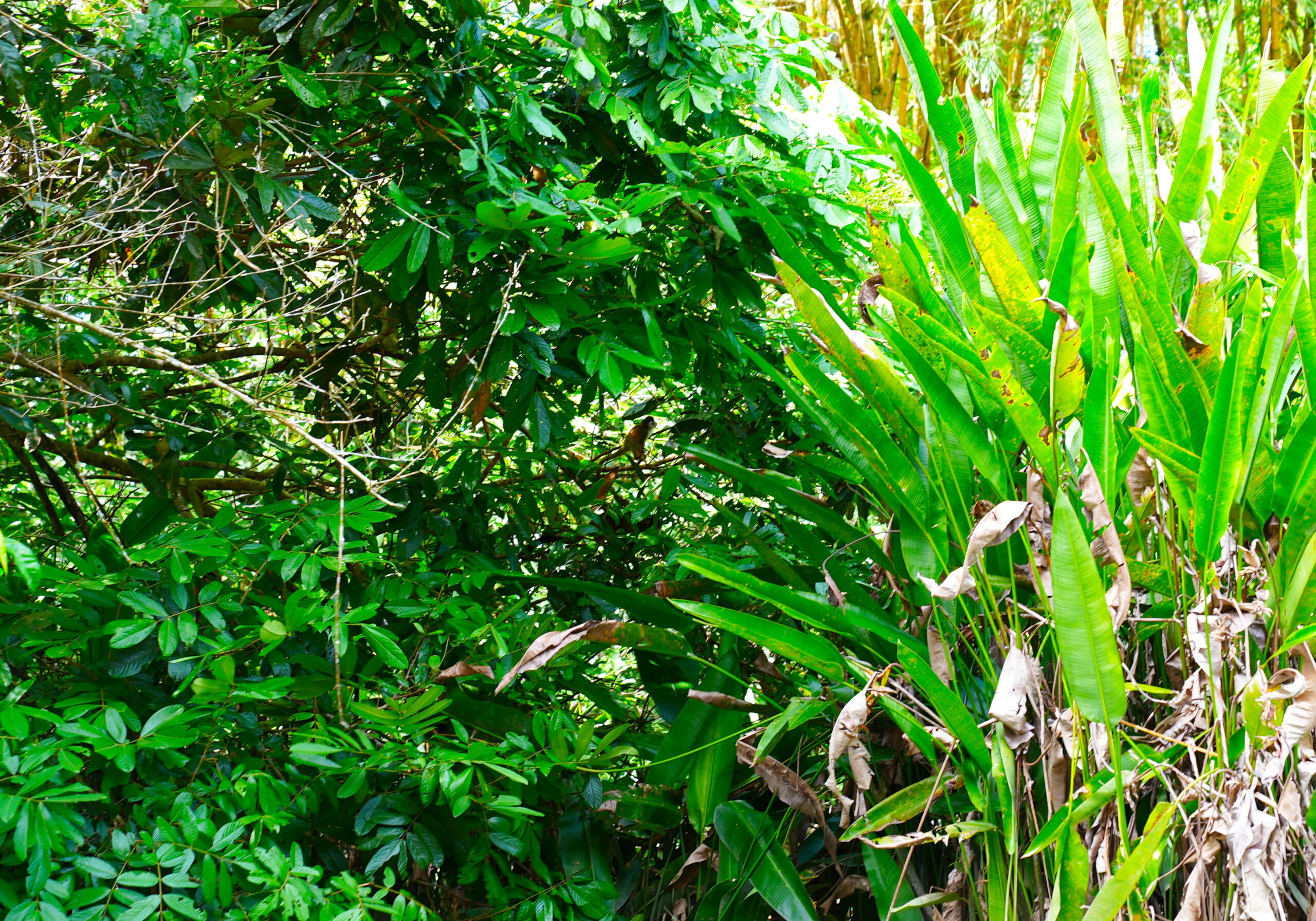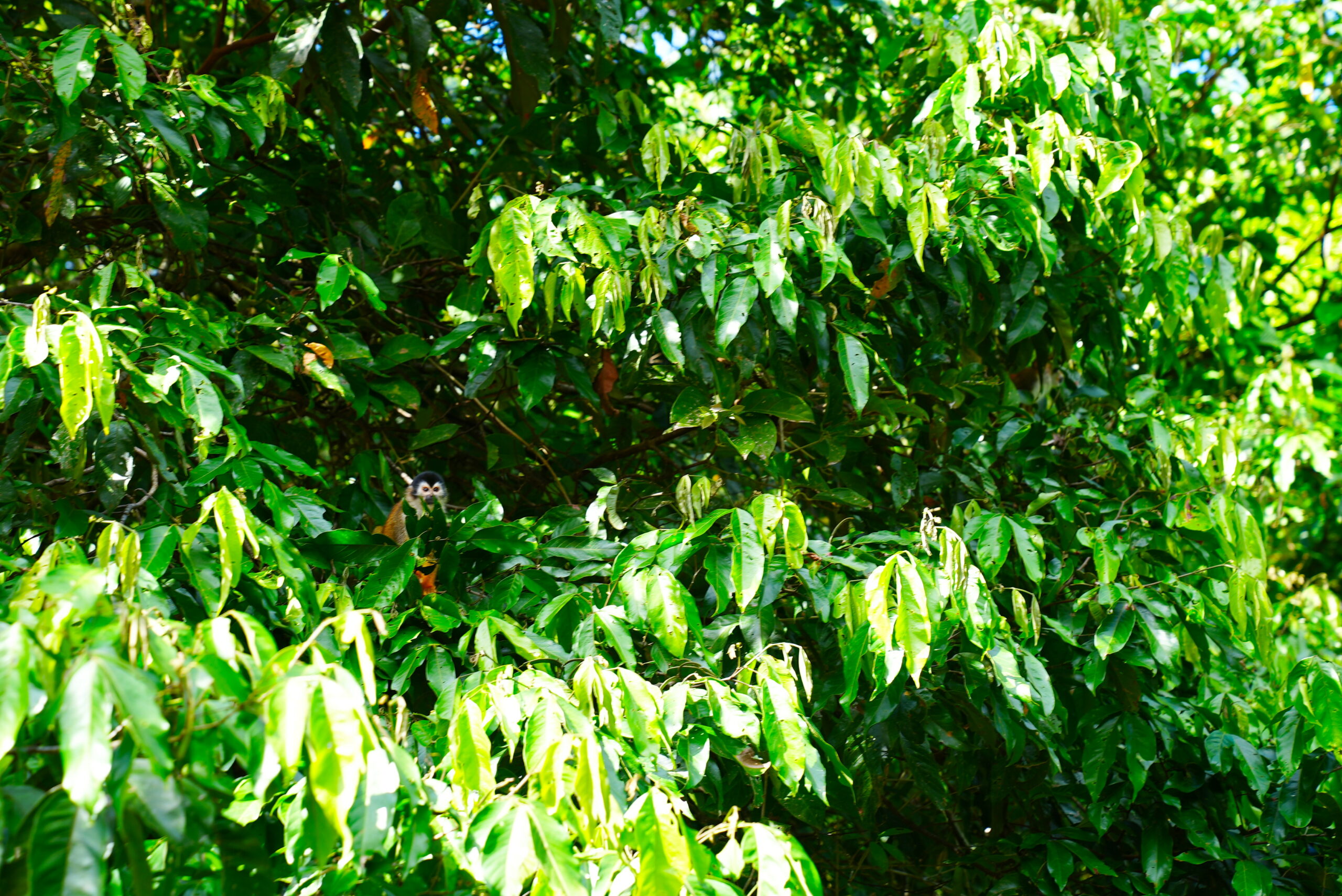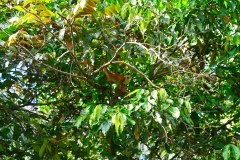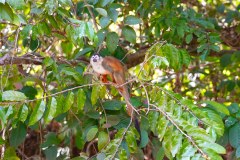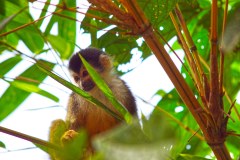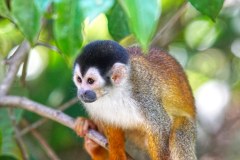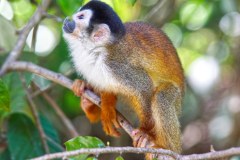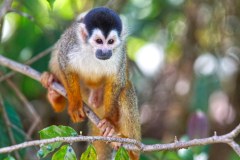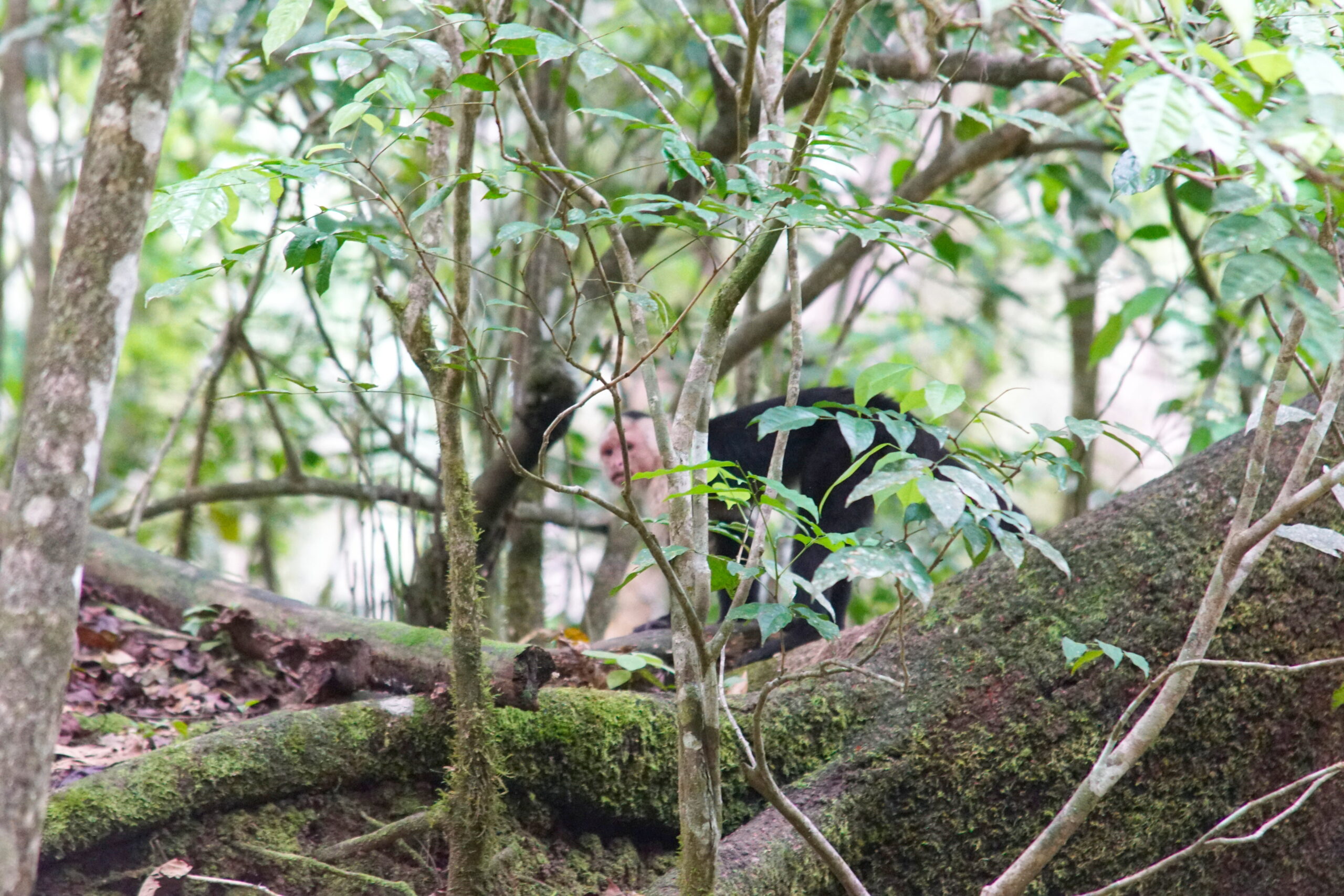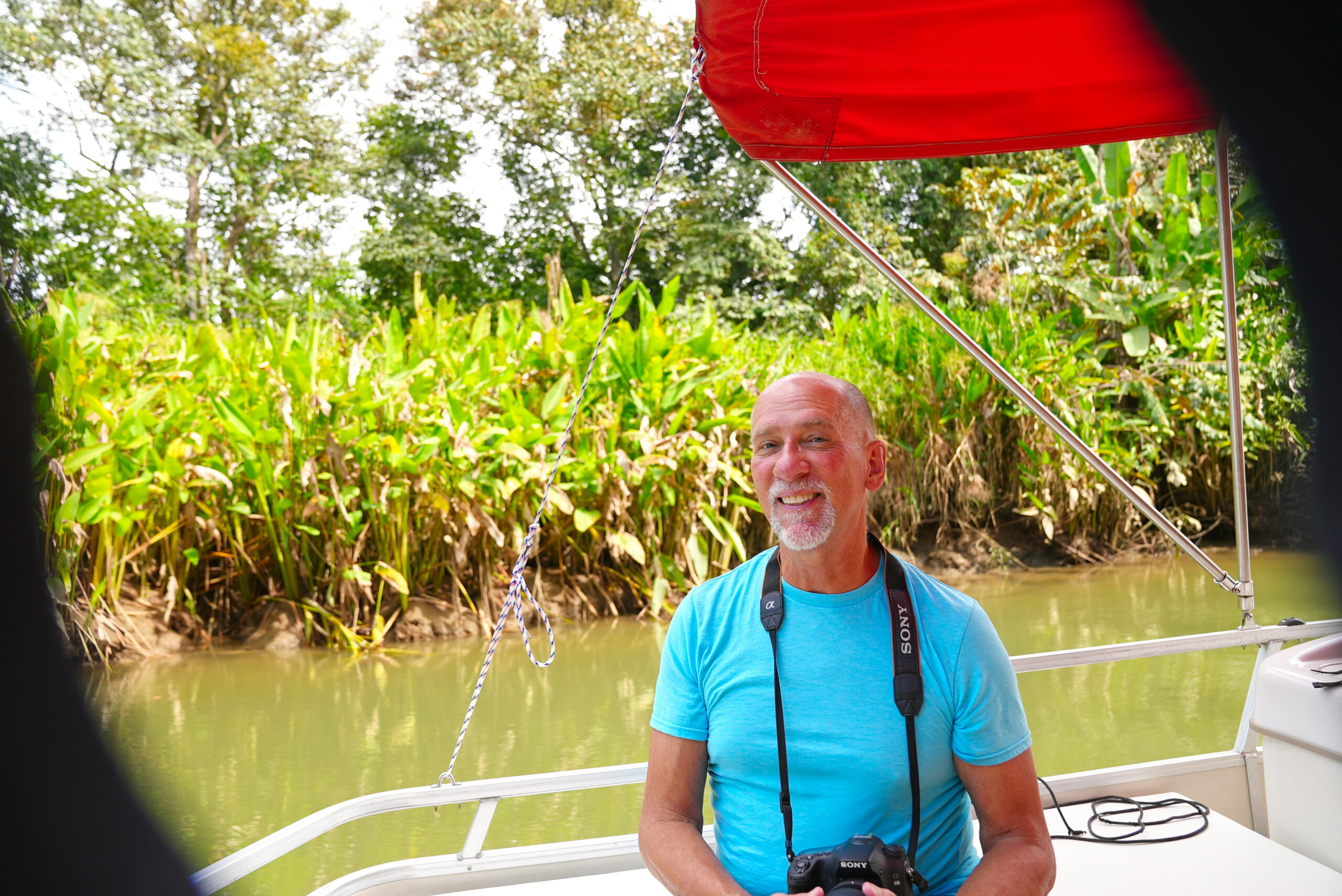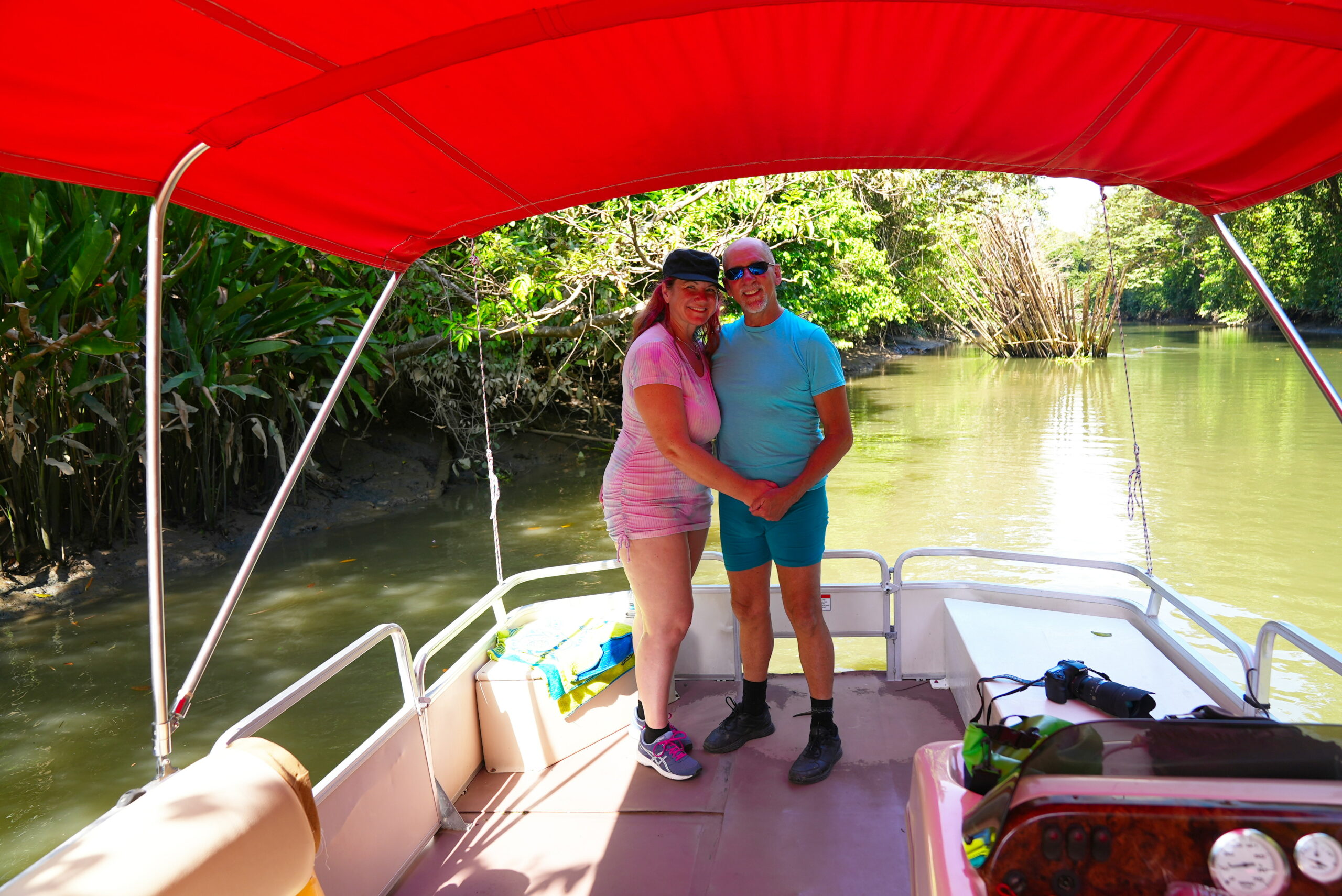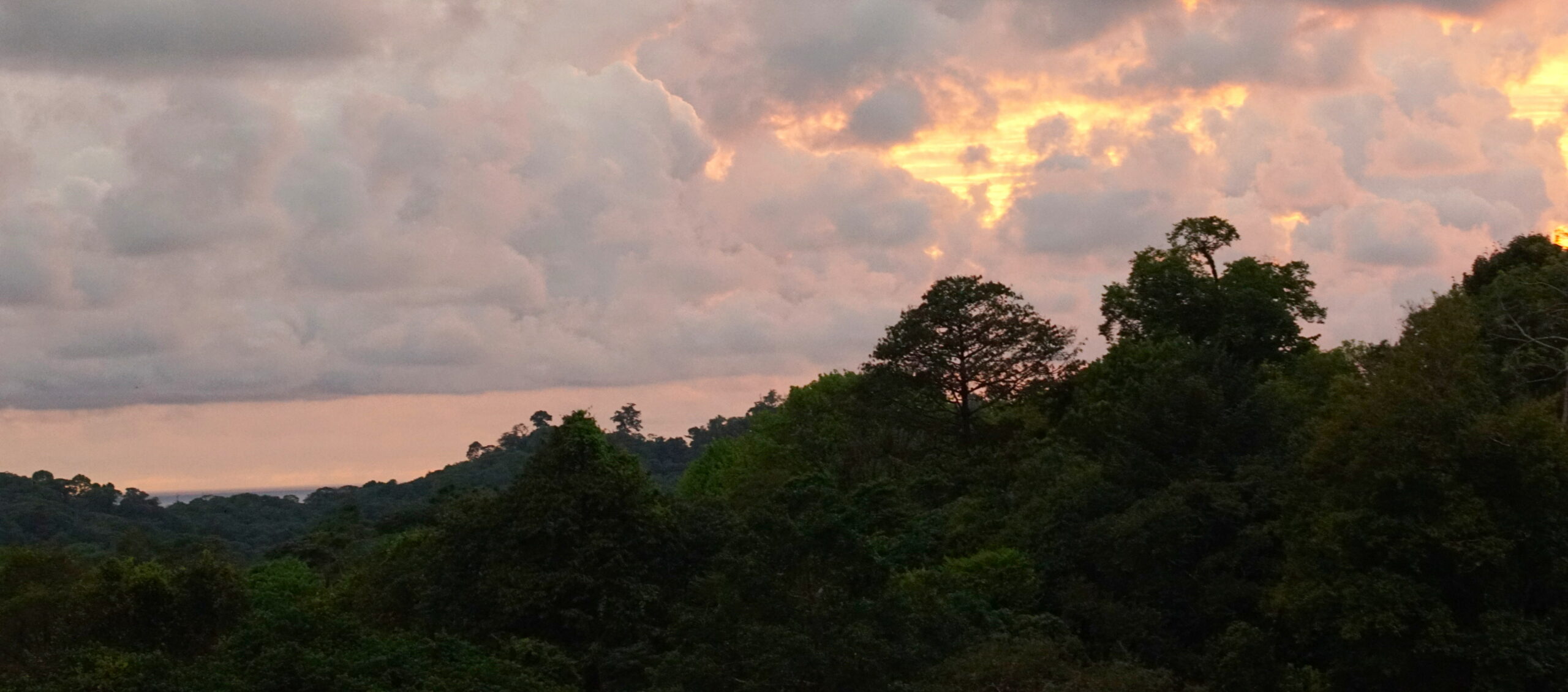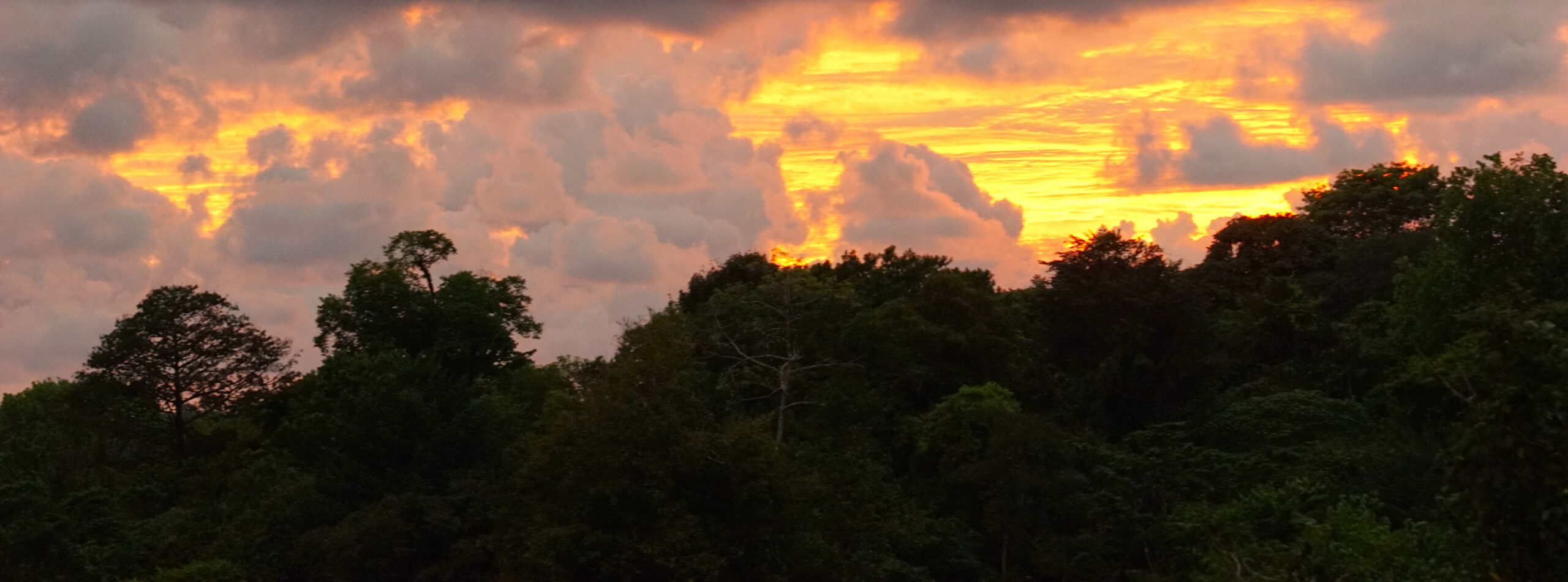Let’s take a boat trip in a mangrove forest to see the wildlife!
First: a mangrove is not a grove of men. Rather, mangroves are salt-tolerant trees, shrubs and ferns also called halophytes, and are adapted to live in harsh coastal conditions. They contain a complex salt filtration system and a complex root system to cope with saltwater immersion and wave action. They are adapted to the low-oxygen conditions of waterlogged mud, but are most likely to thrive in the upper half of the intertidal zone.
Mangrove forests contribute significantly to coastal ecosystems by fostering complex and diverse food webs. The intricate root systems of mangroves create a habitat conducive to the proliferation of microorganisms, crustaceans, and small fish, forming the foundational tiers of the food chain. This abundance of organisms serves as a critical food source for larger predators like birds, reptiles, and mammals within the ecosystem. Additionally, mangrove forests function as essential nurseries for many commercially important fish species, providing a sheltered environment rich in nutrients during their early life stages. The decomposition of leaves and organic matter in the water further enhances the nutrient content, supporting overall ecosystem productivity. In summary, mangrove forests play a crucial and unbiased role in sustaining biodiversity and ecological balance within coastal food webs.
So, we are here in Sierpe, Costa Rica, taking a tour on the Sierpe River, which has the largest mangroves in all Latin America, with the Kokopelli Mangrove Tour company. Note that tour guides in Costa Rica are licensed by the government and know where to find wildlife on this river tour. So we see a lot of animals.
Basilisk
The brown basilisk (Basiliscus vittatus), also commonly referred to as the striped basilisk or in some areas as the common basilisk, is a species of basilisk lizard in the family Corytophanidae. The species is native to Mexico, Central America and adjacent northwestern Colombia, and has been introduced into the U.S. state of Florida as a feral species. The brown basilisk has large hind feet with narrow flaps of skin on the distal edge of each toe. The fact that they move quickly across the water gives them the appearance of “walking on water”.
The brown basilisk’s generic name Basiliscus is taken from the creature of Greek mythology made up of parts of a rooster, snake, and lion that could turn a man to stone by its gaze: the basilisk. This name derives from the Greek basilískos (βασιλίσκος) meaning “little king”.
Smaller brown basilisks can run about 10–20 meters on the water without sinking. Young brown basilisks can usually run farther than older ones. If the animal faces danger, it starts to run very fast on the surface of a river or a lake. Then the flaps on its hind feet are opened and thus more surface area is provided for it to run on water.
Brown basilisk is in the same infraorder as the family Iguanidae. Like most reptiles, the brown basilisk is active during the day. Its outstanding camouflage allows it to remain motionless and very hard to detect. The maximum lifespan of the brown basilisk is probably around 7–8 years. In the wild, most die much sooner. Sad.
Bats
Bats comprise about 20% of all mammal species worldwide (eclipsed only by rodents), so it’s no surprise we find them here.
Rhynchonycteris naso, commonly known as the proboscis bat, long-nosed proboscis bat, sharp-nosed bat, Brazilian long-nosed bat, and river bat, is nocturnal, sleeping during the day in an unusual formation: they line up, one after another, on a branch or wooden beam, nose to tail, in a straight row.
This is why you have a modern camera with a 200mm lens, my friends, and not just some crappy phone. But, I digress.
They also cluster on the undersides of concrete bridges. (We are looking straight up for this photograph.)
You can see the hooks on their tiny feet that allow them to be upside down. Also, if you could catch, say, 100,000 of them, you could make a pretty coat. Although the effort to kill them, skin them, prepare the pelt, and sew the pelt would be excessive, and you could probably find a similar pattern on existing cloth in the Los Angeles garment district and have a coat made for yourself in a week or so for far less money and effort. Just sayin’.
Bees
There are over 20,000 species of bees in the world, and about 700 species are found here in Costa Rica.
We don’t know what kind of bees these are except to say they are honey bees.
Birds
Costa Rica is home to many, many bird species. You can count them here if you like. Here are a few random species (and we’ll have more later).
Named from the French word for fast warship, a frigatebird (Fregatidae) is easily identified by its unique silhouette. They are considered kleptoparasites, but I don’t think this particular bird is.
The lesser nighthawk (Chordeiles acutipennis) is smaller than the common nighthawk, is a nocturnal insectivore, and is a hawk. Hence, its name and, hence, why it is sleeping now.
Our guide points out this bird. I don’t remember what he called it, and there is no way I can identify it from this photograph. But, it is indeed a bird. Good to know, eh?
Porphyrio martinica is a swamphen. Porphyrio is the Latin word for purple, and martinica denotes “of Martinique“. This particular fellow is the American Purple Gallinule, which breed in south-eastern USA and spend all their other time somewhere else. Kinda cool to be known for the place you have sex, eh?
Black Vultures
The black vulture (Coragyps atratus), also known as the American black vulture, Mexican vulture, zopilote, urubu, or gallinazo, is a bird in the New World vulture family whose range extends from the southeastern United States to Perú, Central Chile and Uruguay in South America.
The black vulture soars high while searching for food, holding its wings horizontally when gliding. It flaps in short bursts which are followed by short periods of gliding. So it’s rare to see them perched like this.
Like all New World vultures, the black vulture often defecates on its own legs, using the evaporation of the water in the feces and/or urine to cool itself, a process known as urohidrosis. It is known to regurgitate when approached or disturbed, which assists in predator deterrence and taking flight by decreasing its takeoff weight.
Yummy.
Crocodiles
The American crocodile (Crocodylus acutus) is a species of crocodilian found in the Neotropics. It is the most widespread of the four extant species of crocodiles from the Americas, with populations present from South Florida and the coasts of Mexico to as far south as Peru, Ecuador, and Venezuela. The American crocodile is especially plentiful in Costa Rica.
If these fellows had bright, blue eyes and an upturned mouth (think dolphins), they would seem a lot less intimidating. They might still eat you, but it would be a friendly dinner.
All babies are cute.
There is evidence that crocodiles were once endothermic. But now, not so much. So, although you should keep your distance from this two-meter-plus fellow, he really doesn’t eat very much as compared to a mammal of similar bulk.
Still, there is a lot about crocodiles that shout, “Stay away”.
Yeah, if I were swimming here, well, yeah.
And even if you can’t see any crocodiles, you should assume there are somewhere near. It’s called “best practices” or “don’t die.”
Lots o’ croc’s in this river.
Egrets
The great egret (Ardea alba), also known as the common egret, large egret, or (in the Old World) great white egret or great white heron, is a large, widely distributed egret. The great egret was formally described in 1758 by the Swedish naturalist Carl Linnaeus in the tenth edition of his Systema Naturae under the binomial name Ardea alba. He specified the type locality as Europe. The scientific name comes from Latin ardea, “heron”, and alba, “white”…which is pretty clever!
Like all egrets, it is a member of the heron family, Ardeidae. Traditionally classified with the storks in the Ciconiiformes, the Ardeidae are closer relatives of pelicans and belong in the Pelecaniformes, instead. The great egret—unlike the typical egrets—does not belong to the genus Egretta, but together with the great herons is today placed in Ardea. In the past, however, it was sometimes placed in Egretta or separated in a monotypic genus Casmerodius.
Beautiful, eh? This is one reason people (like us) travel to places like this (Costa Rica).
It looks peaceful…but it’s actually a killing machine. The great egret forages in shallow water or in drier habitats, feeding mainly on fish, frogs, other amphibians, small mammals (such as mice), and occasionally small reptiles (such as snakes), crustaceans (such as crayfish) and insects (such as crickets and grasshoppers). This species normally impales its prey with its long, sharp bill by standing still and allowing the prey to come within the striking distance of its bill, which it uses as a spear. It often waits motionless for prey or slowly stalks its victim.
See the difference? The great egret has a yellow bill and black legs. The snowy egret (Egretta thula) has a black bill and yellow on its legs.
Herons
According to the internet, Herons are also known as shitepokes, or euphemistically as shikepokes or shypokes. Webster’s Dictionary suggests that herons were given this name because of their habit of defecating when flushed. The 1971 Compact Edition of the Oxford English Dictionary describes the use of shitepoke for the small green heron of North America (Butorides virescens) as originating in the United States, citing a published example from 1853. The OED also observes that shiterow or shederow are terms used for herons, and also applied as derogatory terms meaning a thin, weakly person. This name for a heron is found in a list of game birds in a royal decree of James VI (1566–1625) of Scotland. The OED speculates that shiterow is a corruption of shiteheron.
The bare-throated tiger heron (Tigrisoma mexicanum) is a wading bird. The flight is heavy, and the call is a hoarse howk-howk-howk. Males also give a booming hrrrowwr! call, especially at sunset. During emission of the call, the beak opens wide and undulations can be seen along the course of the throat from mid-thorax caudally.
Here we see the green heron (Butorides virescens). There is considerable debate regarding this subspecies. Much of the dispute hinges upon the distinctness of the Caribbean and Central American populations, the second taxon in this species to be described. To describe the two most extreme views, some authors assemble the bulk of the mainland population in the nominate subspecies but treat the parapatric populations as distinct subspecies, while others place all resident populations in maculata and all migratory ones in virescens.
Alrighty then!
I don’t know what species this is. It’s just a cool photograph.
Another cool photograph. You’re welcome.
The boat-billed heron (Cochlearius cochlearius), colloquially known as the boatbill, is an atypical member of the heron family. It is the only member of the genus Cochlearius and was formerly placed in a monotypic family, the Cochleariidae. It lives in mangrove swamps from Mexico south to Peru and Brazil. It is a nocturnal bird, and breeds semicolonially in mangrove trees, laying two to four bluish-white eggs in a twig nest. Boat-billed herons will forage nocturnally and have been seen leaving the roost 30 minutes after sundown to feed. It has been observed that they do not feed when a light source is present such as daylight, moonlight, or artificial light.
Howler Monkeys
Howler monkeys (genus Alouatta, monotypic in subfamily Alouattinae) are the most widespread primate genus in the Neotropics and are among the largest of the platyrrhines along with the muriquis (Brachyteles), the spider monkeys (Ateles) and woolly monkeys (Lagotrix). The monkeys are native to South and Central American forests. They are famous for their loud howls, which can be heard up to three miles away through dense rain forest. Fifteen species are recognized. Previously classified in the family Cebidae, they are now placed in the family Atelidae.
These particular monkeys are Mantled howler monkeys (Alouatta palliata), which weigh up to 10 kg. Pretty brave to be perched on such thin branches, eh?
The mantled howler lives in groups. Group size usually ranges from 10 to 20 members, generally 1 to 3 adult males and 5 to 10 adult females, but some groups have over 40 members. And, for some reason, the fruit and nuts taste better the farther they are from the safety of the trunk.
I guess, when you can hang on with five appendages, you can venture to some pretty scary places. But what really sets these monkeys apart from us humans?
The mantled howler differs from other howler monkey species in that the males’ testes do not descend until they reach sexual maturity. Thus, we know this is a mature male.
Okay, I am just snapping photographs, and this is what I get. It’s not a testicle photoshoot. Promise.
This gives the expression “swinging through the trees” a different meaning.
Okay, enough of this. (oo)
We are in a boat on the river, and the monkeys allow us to get fairly close to them. Plus I have a good camera with a 70-200mm F2.8 lens.
We are able to take a photograph straight on, showing the mantle of the mantled howler.
This fellow is either surprised, angry, or just looking at us and chewing with its mouth open. Probably the last one…
Ibis
Although the American white ibis (Eudocimus albus) is predominantly monogamous and both sexes provide parental care to their young, the male often flies off to engage in extra-pair copulation with other nesting females after mating with its primary female partner. These extra-pair copulations are usually done after the within-pair copulations, and make up about 45% of all total matings, although only about 15% of all extra-pair copulations are successful. By not restricting the number of females it copulates with, the male is able to increase its reproductive success considerably. Although females are receptive towards extra-pair copulations, male mate-guarding greatly reduces the rate of successful female involvement in attempted extra-pair copulations by other males.
The African sacred ibis (which is not this bird) was an object of religious veneration in ancient Egypt, particularly associated with the deity Djehuty or otherwise commonly referred to in Greek as Thoth. He is responsible for writing, mathematics, measurement, and time as well as the moon and magic. In artworks of the Late Period of Ancient Egypt, Thoth is popularly depicted as an ibis-headed man in the act of writing. The more you know…
Did you ever notice how many redheads or, in this case, redbills, have blue eyes? Weird, right?
The American white ibis prefers to eat crayfish and other crustaceans, but also takes aquatic insects and small fish. Outside the nesting season, the diet is highly variable, as abundance and types of prey depend on both the region and the habitat. Generally, in North America, the main prey are crustaceans, mostly crayfish.
Iguana
The green iguana (Iguana iguana), also known as the American iguana or the common green iguana, is a large, arboreal, mostly herbivorous species of lizard. It grows to 1.7 meters in length from head to tail, although a few specimens have grown more than 2 meters with bodyweights upward of 9 kg.
You don’t think of iguanas having thick red tongues. But they do.
Green iguanas have very sharp teeth that are capable of shredding leaves and even human skin. These teeth are shaped like a leaf, broad and flat, with serrations on the edge. The similarity of these teeth to those of one of the first dinosaurs discovered led to the dinosaur being named Iguanodon, meaning “iguana tooth”, and the incorrect assumption that it had resembled a gigantic iguana. The teeth are situated on the inner sides of the jawbones, which is why they are hard to see in smaller specimens.
Primarily herbivorous, green iguanas are presented with a special problem for osmoregulation; plant matter contains more potassium and as it has less dense nutritional content, more must be eaten to meet metabolic needs. As green iguanas are not capable of creating liquid urine more concentrated than their bodily fluids, like birds they excrete nitrogenous wastes as urate salts through a salt gland. As a result, green iguanas have developed a lateral nasal gland to supplement renal salt secretion by expelling excess potassium and sodium chlorides.
Green iguanas possess a row of spines along their backs and tails, which helps to protect them from predators. Their whip-like tails can be used to deliver painful strikes, and like many other lizards, when grabbed by the tail, iguanas can allow it to break, so they can escape and eventually regenerate a new one. In addition, iguanas have a well-developed dewlap, which helps regulate their body temperature. This dewlap is used in courtships and territorial displays.
Despite their name, green iguanas occur in different colors and types. In southern countries of their range, such as Peru, green iguanas appear bluish in color, with bold blue markings. On islands such as Bonaire, Curaçao, Aruba, and Grenada, a green iguana’s color may vary from green to lavender, black, and even reddish brown. Green iguanas from the western region of Costa Rica are red, and animals of the northern ranges, such as Mexico, appear orange. Juvenile green iguanas from El Salvador are often bright blue, but lose this color as they get older.
Parrots
Parrots (Psittaciformes) are birds with a strong curved beak, upright stance, and clawed feet. There are four families that contain roughly 410 species in 101 genera, found mostly in tropical and subtropical regions. The four families are the Psittaculidae (Old World parrots), Psittacidae (African and New World parrots), Cacatuoidea (cockatoos), and Strigopidae (New Zealand parrots).
The parrot we see mostly is the scarlet macaw (Ara macao).
In Costa Rica’s Central Pacific, these birds have learned to feed on introduced Teak trees (Tectona grandis) and Almond Beach Trees. Local non-profit organizations have planted hundreds of those trees along the coastline from the Tárcoles River basin to Esterillos Beach which had helped increase the population drastically. The combined efforts and the correct ecotourism have also an important role in the conservation these birds. Tour companies along the Tarcoles River and its mangroves have bet on the importance of birdwatching as an asset for the growth on its population.
According to the internet, “A typical sighting is of a single bird or a pair flying above the forest canopy.” For once, the internet is correct.
Just another of my never-ending examples of why you need a real camera when you travel and not just a crappy phone camera. But, I digress…
Please enjoy more scarlet macaw photographs!
Sierpe River
As you will (I’m sure) recall, we are traveling on the Sierpe River.
This area is part of the Térraba – Sierpe National Wetland. It has palm trees on one side but not the other. I don’t know why.
There a many small tributaries too small for our boat to navigate.
The Sierpe river is born in the mountain ranges of the Golfo Dulce Forest Reserve, and its route never exceeds an altitude of 20 m above sea level. n. m. For this reason, its course is slow and rambling, prone to causing flooding and with a large contribution of sediments.
You probably would not want to walk in that mud, but these muddy flat areas are where we see much of the bird life here.
The panorama gives a better idea of the size of the river. We just don’t spend a lot of time here because there is not an abundance of wildlife to see here.
On the wide parts of the river, we pass towns that look like nothing more than powerboats; no fishing boats or sail boats. And, of course, no swimmers.
Snakes
There are many snakes is Costa Rica. It’s difficult to find out much information about them because everyone wants to write about the big ones or the poisonous ones.
We don’t know what kind of snake this is, but it is curled up in the branches of a tree.
Yeah, you are thinking, “Watch where you step. There may be snakes.” However, you should be thinking, “Keep your eyes in the trees. There will be snakes.”
At any rate, I don’t know if these particular snakes eat squirrel monkeys, but…
Squirrel Monkey
The Central American squirrel monkey (Saimiri oerstedii) is a member of the family Cebidae, the family of New World monkeys containing squirrel monkeys, capuchin monkeys, tamarins and marmosets. It is a small monkey with an orange back and a distinctive white and black facial mask. It has an omnivorous diet, eating fruits, other plant materials, invertebrates and some small vertebrates. In turn, it has a number of predators, including raptors, cats, and snakes.
We hear them before we see them. The Central American squirrel monkey is noisy. It makes many squeals, whistles, and chirps. It also travels through the forest noisily, disturbing vegetation as it moves through. It has four main calls, which have been described as a “smooth chuck”, a “bent mask chuck”, a “peep” and a “twitter”.
Adults reach a length of between 266 and 291 millimeters, excluding tail, and a weight between 600 and 950 grams. The tail is longer than the body, and between 362 and 389 mm in length.
We are in a boat, and the monkeys are curious. This fellow pauses long enough for us to take this photograph.
In fact, more than a few of the monkeys pose for us.
Turtles
There are nine freshwater turtle species in Costa Rica.
However, we see only this one, the Meso-American slider (Trachemys venusta) turtle.
These two spend their time sunning themselves and, I suppose, avoiding being eaten by crocodiles.
We are amazed our guide can find these fellows sitting (laying?) quietly in the mud. I guess you have to know where to look.
White-faced Capuchin Monkey
The Panamanian white-faced capuchin (Cebus imitator), also known as the Panamanian white-headed capuchin or Central American white-faced capuchin, is a medium-sized New World monkey of the family Cebidae, subfamily Cebinae. They are highly social, living in groups of 16 individuals on average, about three quarters of which are females.
However, this is the only one we see. According to the internet, “The population of white-faced capuchin in Guanacaste, Costa Rica in particular is noted for hunting squirrels, magpies, white-crowned parrots, and baby coatis.” Yum!
Yours Truly
To lend evidence that, indeed, we are on this trip and didn’t just steal photographs from the internet (that’s a joke, son), we have a few photographs of ourselves.
It’s just us and our guide on this river excursion. We like it that way. 🙂
It’s black around the edges because the lens hood was not attached correctly.
Well, one of the photographers at work. We have two cameras, one of which has a longer zoom lens. If you have two lens, it’s better to have two cameras rather then switching lens because, 100% of the time, the wrong lens will be on the camera when you need it.
Our version of a selfie. You’re welcome.
Sunset
We return to our Airbnb long before sunset, so it’s not part of our mangrove trip. But it’s worth remembering and sharing.
As the sun sets, rain clouds cover the western sky.
The sun continues to set, and the yellow light reflects off distant clouds.
Today is a perfect way to show and to understand why we travel.



